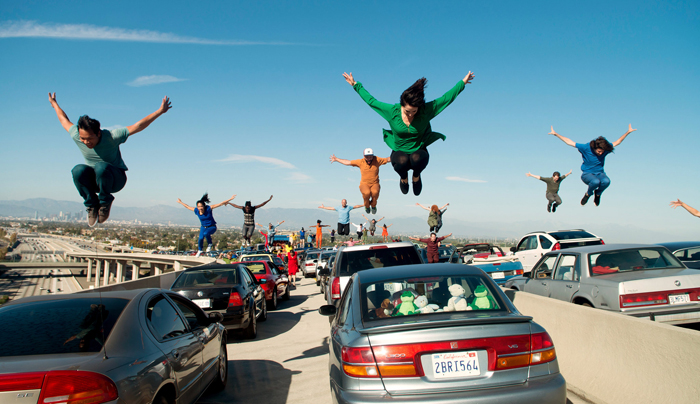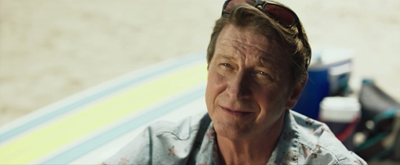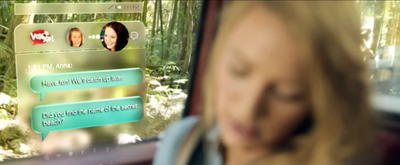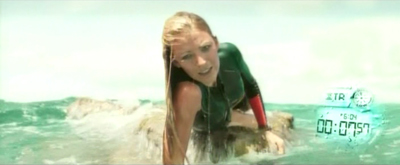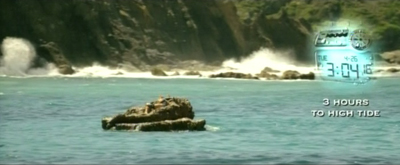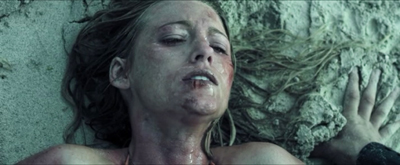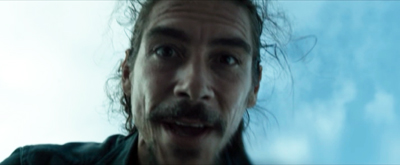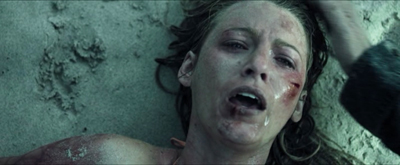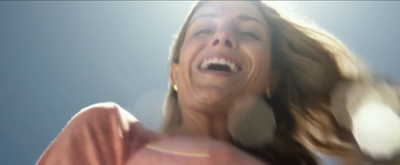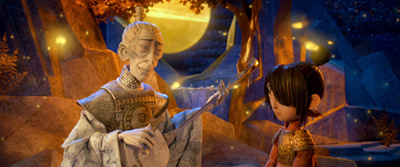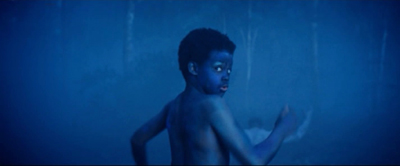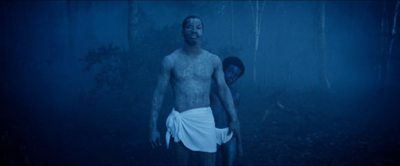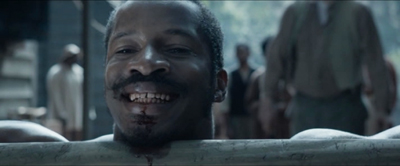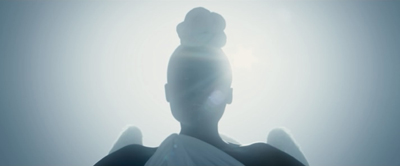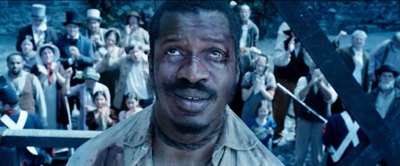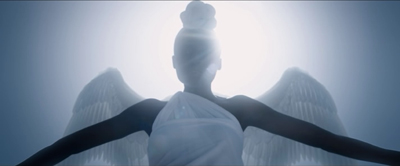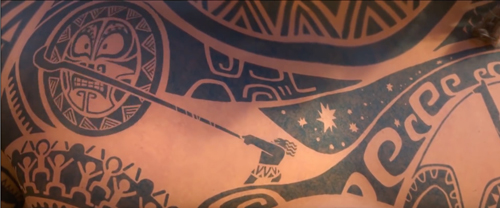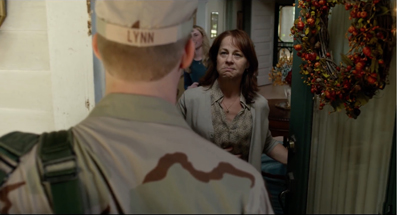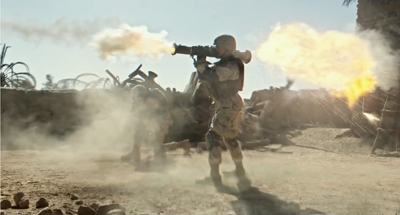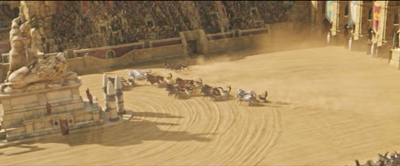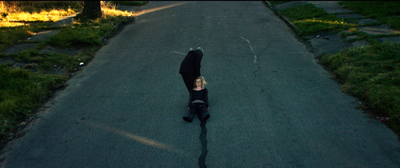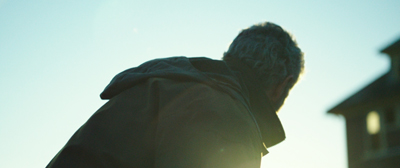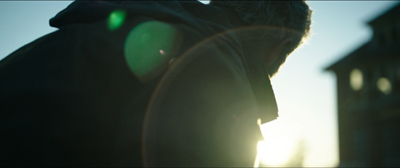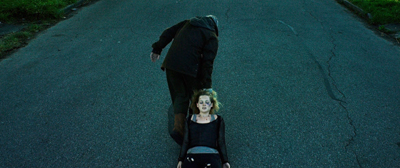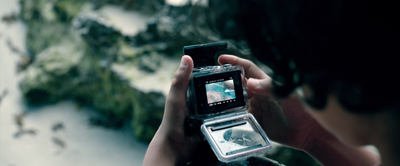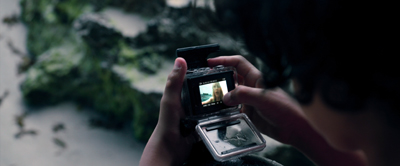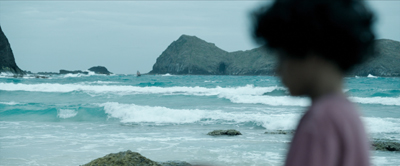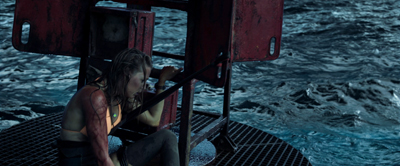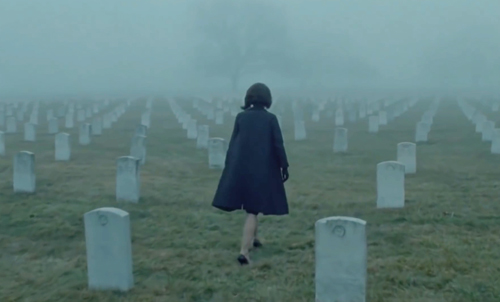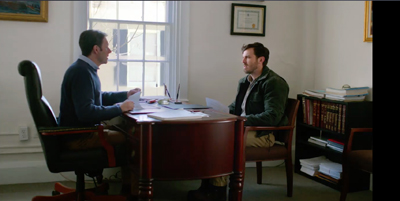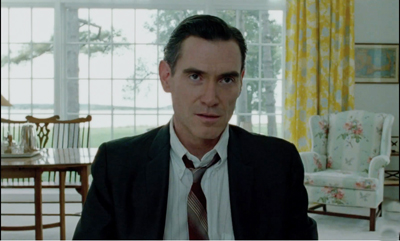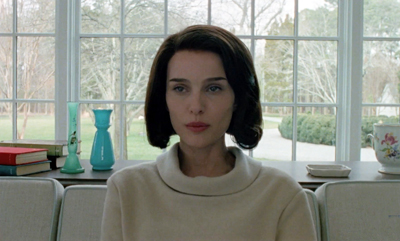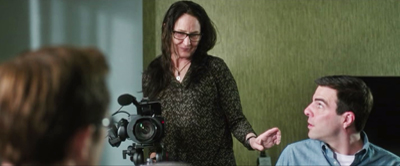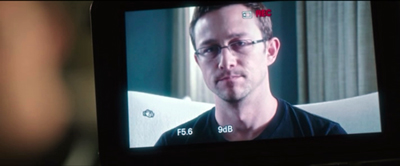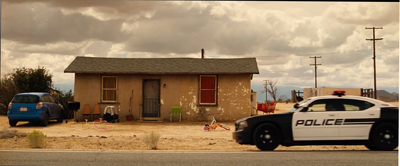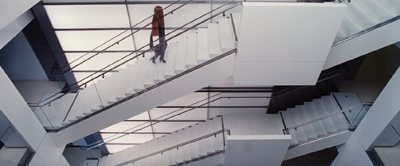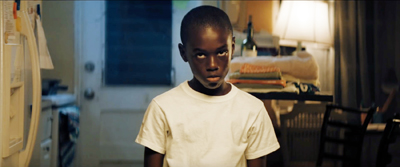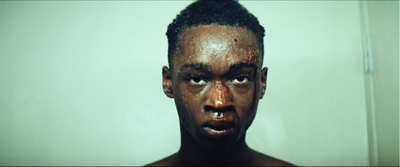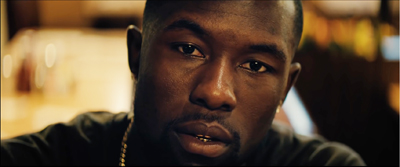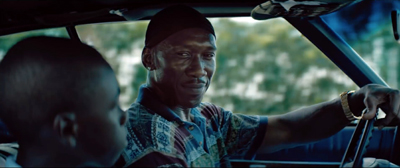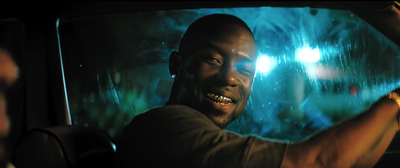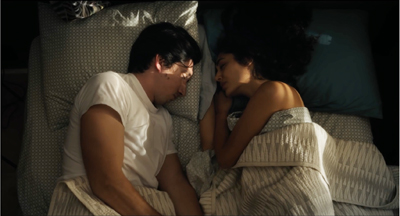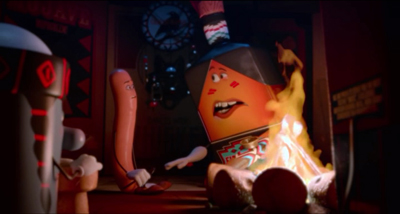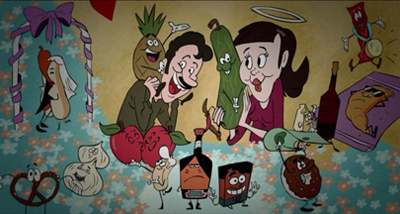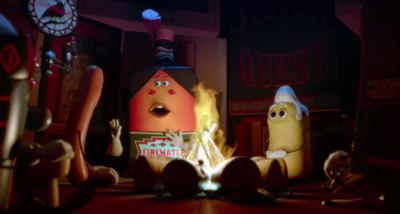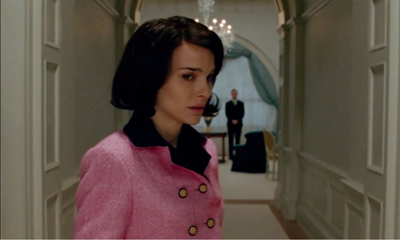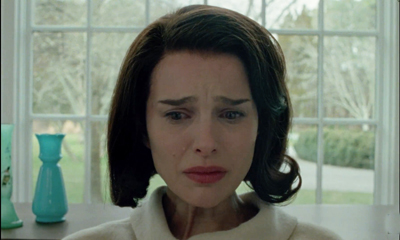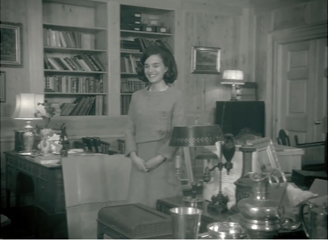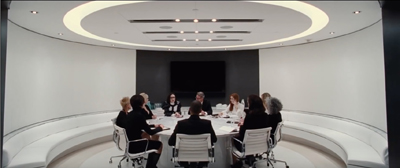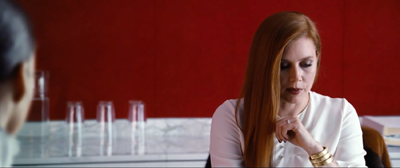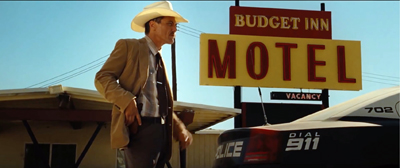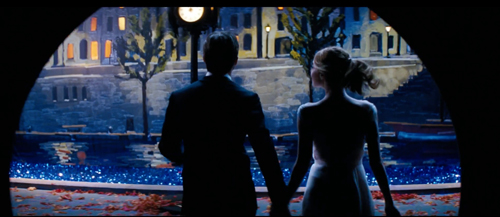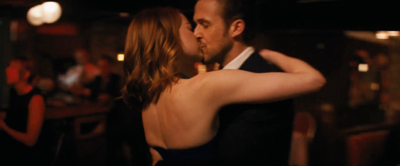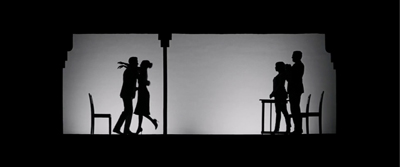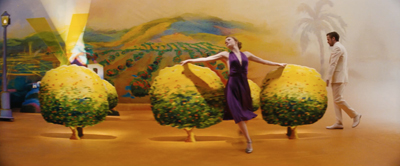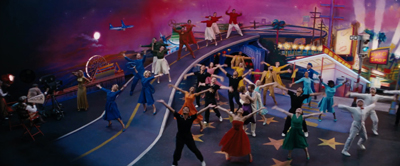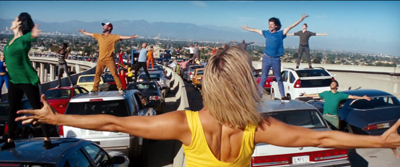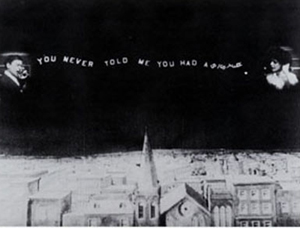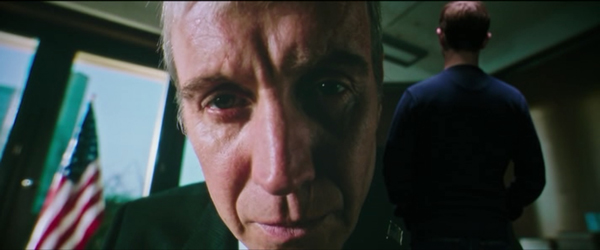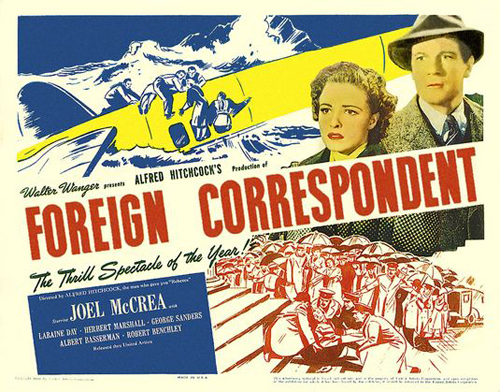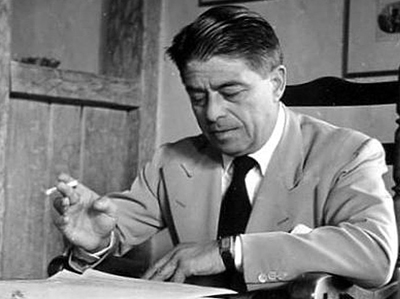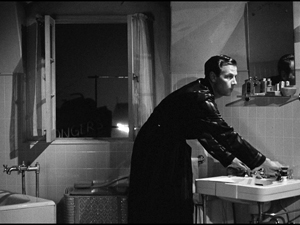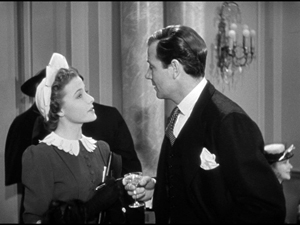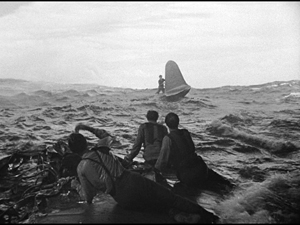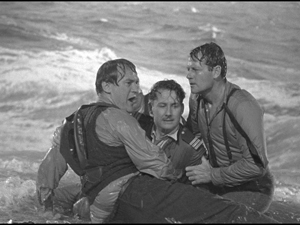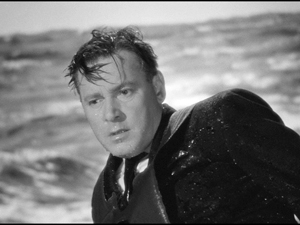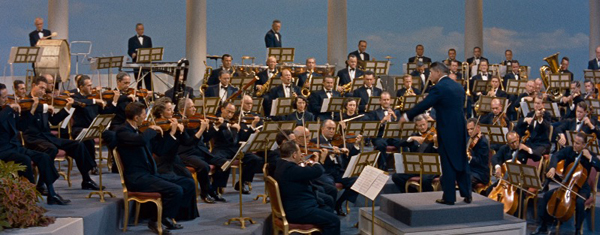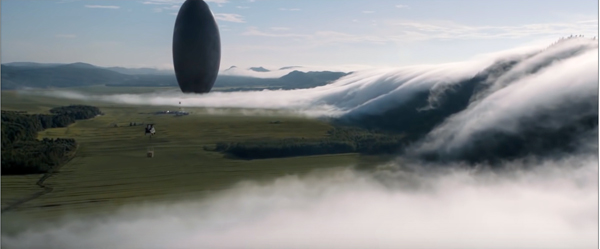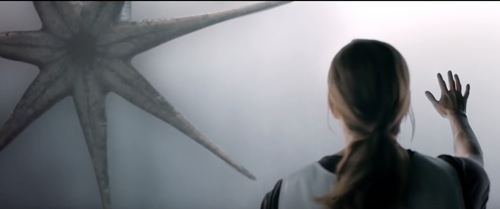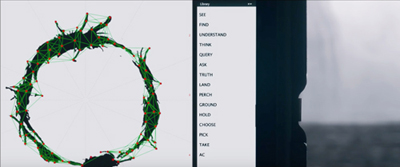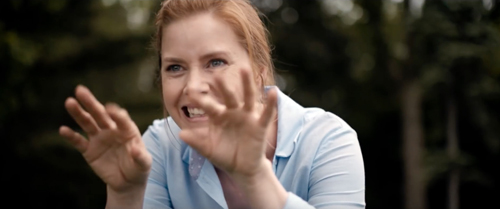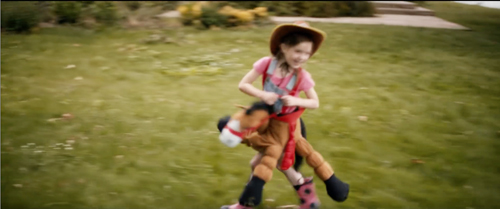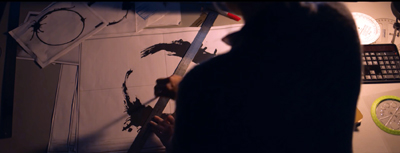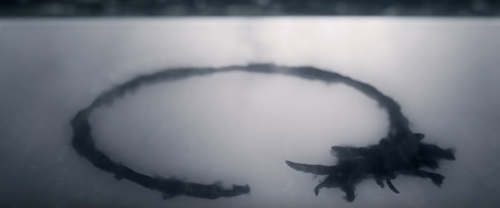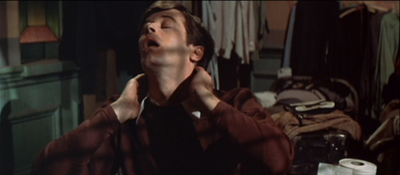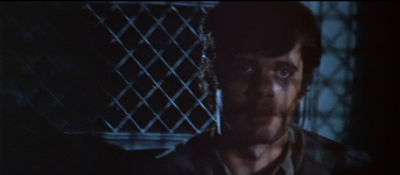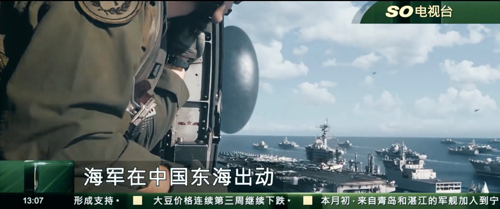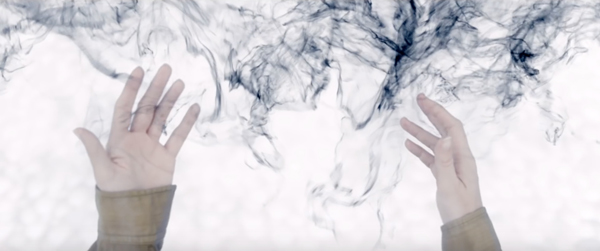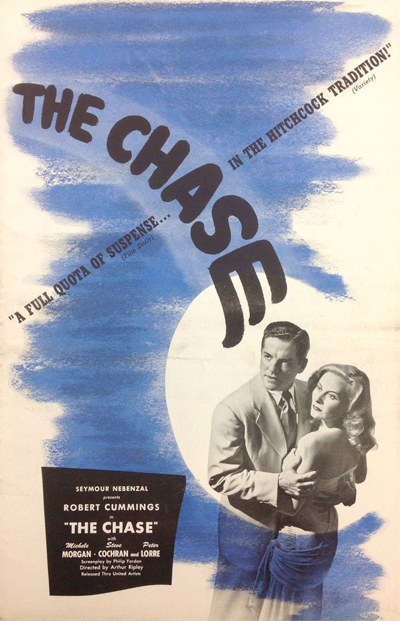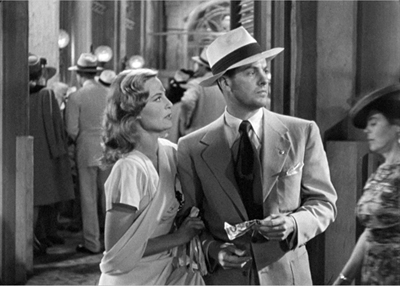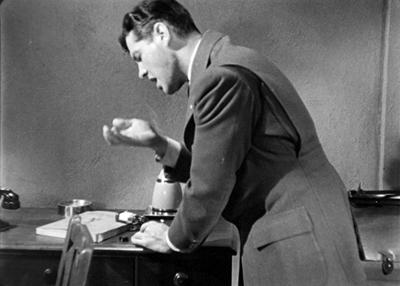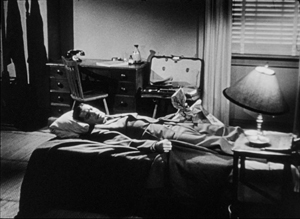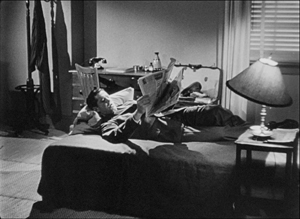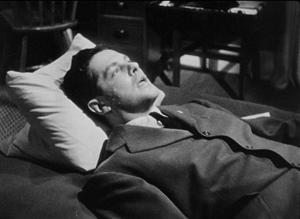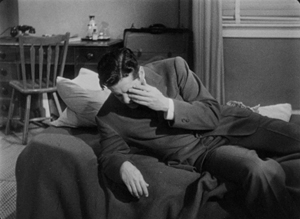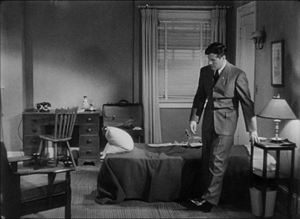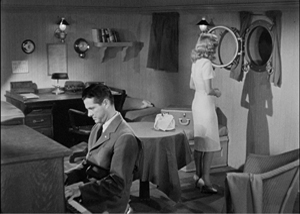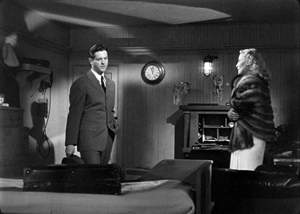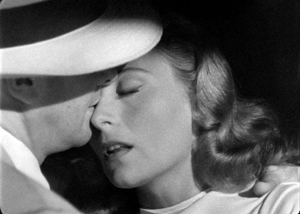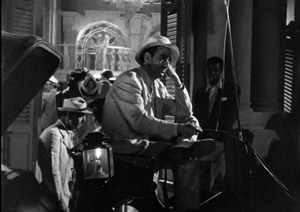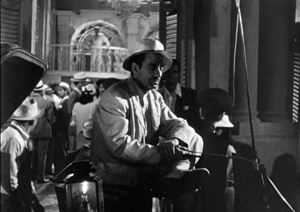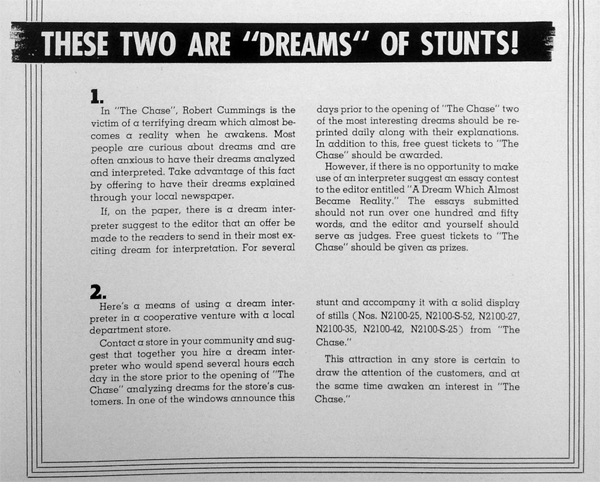Archive for the 'Narrative strategies' Category
Fantasy, flashbacks, and what-ifs: 2016 pays off the past
La La Land.
DB here:
After I see a new movie, I like thinking about its ties to film history. This isn’t a matter of sneering, “They did it better in the old days,” though often that’s true. Rather, I like exploring how our films both rely on and swerve from the traditions they invoke.
I’m not talking only about movies that self-consciously point at Hollywood’s past, as La La Land does. Every new release participates in film history—and sometimes changes it. Most critics don’t have the space or inclination to point this up, but those of us who study film as an art can. Looking closely at form and style makes the past present to us in a vivid way.
Students are taught that in the 1910s Griffith took crosscutting to a new level, and true enough. But it’s not often mentioned that crosscutting has remained a permanent expressive option for filmmakers today. Very often they use it as Griffith did: to build tension, especially in a chase or a race against time; or to highlight narrative parallels, as he did in Intolerance. What excites young audiences in the work of Christopher Nolan, for example, are in large measure smart elaborations on principles that go back a hundred years.
This isn’t to complain that Nolan isn’t original—originality in the strong sense is very rare—but rather to point up an overarching dynamic of continuity and change across the history of the art. We understand what Nolan’s doing better when we see how he recasts inherited techniques, as when Inception takes parallel crosscutting to a kind of limit in its embedded dreams.
My upcoming book, Reinventing Hollywood: How 1940s Filmmakers Changed Movie Storytelling, is an effort to refine an argument I made in The Way Hollywood Tells It: that major narrative techniques of contemporary cinema got consolidated in the 1940s. The techniques I have in mind include general principles like non-chronological plotting and subjective probing of character’s experience, as well as particular devices like flashbacks, voice-over, and fantasy scenes.
I say “consolidated” because many of those strategies can be found sporadically in the silent era and the 1930s. Forties writers and directors adapted them to the sound cinema, made them popular, and explored them in ways that go beyond most earlier instances. These filmmakers added a body of resources to the classical tradition: after the 1940s, later filmmakers could develop the techniques in fresh ways. There were new colors on their palettes.
I talk about several films, and among those I significantly spoil The Shallows, Manchester by the Sea, The Birth of a Nation, Nocturnal Animals, Moonlight, and La La Land. But you should be able to skip the films you fear I’ve overshared on.
Schemas and their sneaky ways
Reinventing Hollywood argues that we can understand the process as one of schema and revision. I borrow from E. H. Gombrich the idea that a schema is a pattern handed down by earlier artists that becomes a point of departure for those who follow.
For example, shot/reverse-shot cutting is a stylistic schema, going back to the 1910s. Every professional filmmaker knows how to execute it, though some will find fresh ways to use it. The Shallows, a summertime thriller from the talented director Jaume Collet-Serra, uses it in orthodox ways throughout.
Most filmmakers apply the shot/reverse-shot schema to phone conversations as well. But here Collet-Serra innovates (mildly) by using cellphone technology to give us a phone conversation with a redoubled shot/reverse-shot pattern. The editing schema is given within a single frame as Nancy talks with her father.
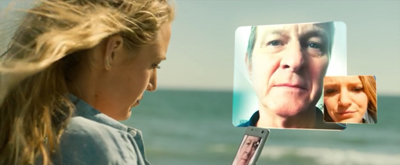
This isn’t, I think, a mere gimmick. For one thing, we’re primed for it by the scene of Nancy’s arrival, when she browses through photos of her dead mother. Those are delivered to us as paste-ups in the same frame, rather than as optical POV shots of Nancy’s phone. Soon after, still during her ride to the beach, we see an instant message from her friend.
So the pseudo-shot/reverse-shot has been prepared for by these other displays of her screen. We’re ready for this to be an intrinsic norm of this film. Later we’ll get the ticking-clock deadlines through inserts of of her watch.
More generally, the film as a whole tightly restricts us to Nancy’s experience. Nearly everything we see and hear is filtered through her consciousness. (The film’s momentary detours from her range of knowledge work to maximize suspense, in the manner of the bomb under the table.) During the phone conversation, cutting back to her father at home in Galveston would have made him a more important character. As it is, the narration keeps the emphasis on her situation and the beautiful but menacing landscape, the “perfect beach” that she needs to conquer as her mother did.
Shot/reverse-shot is a schema for handling stylistic options. I suggest that there are narrative schemas too, tried-and-true storytelling patterns that filmmakers can repeat, reject, or revise. Novelty builds on familiarity. As Damien Chazelle describes La La Land: “I’m trying to hark back to certain old traditions but hopefully show you something you haven’t seen before.”
For the viewer, schemas supply a certain predictability. We’re used to the back-and-forth of shot/reverse-shot cutting. Likewise, we expect a flashback to supply background information that clarifies the situation in the present. In the American studio tradition, a filmmaker who revises a schema needs to give us enough of the pattern to make us realize the alterations. The Shallows‘ revision of shot/reverse-shot is clear to us because, given our knowledge of FaceTime/Skype technology, we can grasp the images as diagrammatic presentations of a familiar editing pattern. Similarly, we can sense a flashback even when it’s quick or cryptic, and we anticipate that things will clarify later. The dynamic of familiarity and novelty will work only if the the new twist plays off something recognizable.
Back in September, I noted that almost every film I was seeing seemed indebted to 1940s storytelling, but I talked only about Sully. Today I go wider and look at several 2016 films, both pop and prestigious, that rely on methods of roundabout storytelling that coalesced back then. We’re so used to these methods that we tend to forget their debts. By analyzing how our writers and directors draw on this tradition, we better understand their roots in film history–and their genuine contributions to changing it.
In her, and his, shoes
One of the most taken-for-granted narrative strategies is that of subjectivity. Here filmmakers use images and sounds to reveal a character’s mind and senses. The main schemas have become very familiar.
Today we scarcely notice optical POV shots or fantasy imagery. They were common in silent film, became less common in Hollywood in the 1930s, and grew very common in the 1940s. The sustained optical POV of Lady in the Lake (1947) is one instance, and so are the protracted dream and delirium sequences in psychological films like Spellbound (1945) and The Lost Weekend (1945).
Go back to The Shallows and you’ll find plenty of POV shots. When Nancy regains consciousness after the climax, we get a mixture of optical viewpoint and imaginary shots, when she first sees Carlos and then “sees” her mother’s approval of her courage.
Dreams are another common device for rendering subjectivity. They became commonplace in the psychoanalytical films of the 1940s, and have been used ever since to probe the more or less unconscious impulses of our characters. We’re let in on characters’ dreams in A Quiet Passion, Hacksaw Ridge, and Kubo and the Two Strings.
Both visions and dreams become important motifs in The Birth of a Nation. Early in the film, the child Nat Turner, who has been called “a leader and a prophet” by an elder slave, dreams of himself in tribal paint running through a forest. Later, grown-up and developing a sense of himself as a rebel against oppression, he re-experiences the dream, only now the child encounters himself as an adult, who moves to protect him. The child becomes father to the man.
These plunges into subjectivity run along with images of Nat’s revelation: an angel he sees at moments of greatest torment, on the whipping block and on the gallows.
On the second occasion, the figure is more fully revealed as an angel, and she seems ready to embrace him. The nocturnal spirituality of the opening has been counterbalanced by something like Christianity, but it’s hardly the white folks’ version: Nat sees a dark angel.
Frames and breaking frames
Moana.
Subjectivity can also shape our sense of time, thanks to flashbacks. Very common nowadays is the brief flashback representing a sudden memory. In Allied, a shot of Max and Marianne on their rooftop bed-sit in Casablanca comes when Max is recalling their mission, after he’s learned she might be a German spy. A parallel device is the auditory flashback, as when a character recalls earlier lines of dialogue, which might not be accompanied by imagery from the past scene. Several of these films drop in sonic flashbacks, which serve as reminders to the audience as well as recollections for the characters.
A subjective push into the past can take over the whole structure of the film. This happens when big stretches of the plot are presented through flashbacks to events that characters tell or remember. A fairly pure case is Billy Lynn’s Long Halftime Walk. It intercuts three time periods: the present, as Billy and his comrades in arms visit a Thanksgiving football game; Billy’s return to his family two days before the game; and the more distant events of Billy’s tour of duty in Iraq, culminating in the death of his beloved sergeant Shroom.
Throughout the film we’re largely restricted to what Billy experienced in both present and past.
In most films, though, flashbacks don’t represent memories. Often a flashback is initiated as a character’s recollection or testimony, but it presents events that a character didn’t know about. In these cases, the film has it both ways–subjective when it wants us to feel with the character, but wider-ranging when the extra information can yield suspense or another perspective on what the character knows. This happens in Jackie, in which Jacqueline Kennedy tells a journalist about the JFK assassination and its aftermath. We mostly adhere to what she could have seen and heard, but some incidents occur outside her ken. The interview situation motivates the return to the past, and that’s usually what we find in these partly subjective flashbacks.
The flashback technique was fairly common in Hollywood’s silent era but rarer in the 1930s. It emerged as a major creative option in the Forties; there are more flashbacks in 1944 feature releases than in all of the Thirties. Nowadays most films, even Moana, resort to it. (Maui’s boasting song “You’re Welcome” reviews his gifts to humanity.) Virtually every film I mention today employs at least one flashback–a testimony to the enduring power of this storytelling norm.
Since even the most personal flashbacks tend to stray from what characters could have witnessed, it’s not surprising that today we commonly have completely “objective” flashbacks. The plot simply jumps to and fro through time without the alibi of character memory. Hollywood has occasional early instances (Beau Geste, 1927; A Man to Remember, 1938; Confidence Girl, 1952; The Killers, 1955), but the “external” flashback is rare before the 1960s. Over the decades, filmmakers and audiences became comfortable with the flashback that simply admits itself as such. The time shift may be signaled by a title (“Two Days Earlier” in Billy Lynn), but some films find other ways to announce the flashback.
A simple example is Ben-Hur. Steered by a voice-over narrator (who will turn out to be a character in the film), the opening shows the start of a chariot race in a Roman Circus. Two young bravos swap lines that arouse curiosity: “You should have stayed away.” “You should’ve killed me.” “I will.” Then the race starts, the camera pans left to follow it, and the shot dissolves (a graphic match) to an image of two horsemen racing around a rock.
They are youthful versions of the competitors we’ve just met, and we’ll learn that Messala is Judah Ben-Hur’s adopted brother. The rest of the plot follows the friends’ careers that lead them to the fateful chariot competition. And that opening stretch is replayed when the flashback catches up with the frame situation. We’re reintroduced to the Circus, and identical shots show them exchanging the same lines we heard at the start.
This sort of overlapping return to the frame is common when the flashback consumes a large chunk of the film. One traditional schema, used in Ben-Hur, presents the frame story as a situation in crisis. This serves to grab our attention, to raise questions, and to hold the outcome of present-time events in suspension while the backstory clicks in.
The crisis structure is seen in Hacksaw Ridge, when after glimpses of a ferocious battle we see the protagonist rushed along on a stretcher. Thanks to a title, “Seven Years Earlier,” we shift to the past in another “objective” flashback. Eventually we’ll loop back to the wounding and rescue of Doss at Hacksaw Ridge.
The earlier versions of Ben-Hur didn’t resort to flashback construction. Similarly, Sergeant York (1941), which has similarities to Hacksaw Ridge, relies on straightforward chronology. The crisis schema became popular in the 1940s (e.g., The Big Clock, 1947), but it’s even more common now than it was then.
So is a willingness to put flashbacks inside flashbacks. Hacksaw Ridge‘s main flashback breaks its own chronology to show scenes of domestic violence in Doss’s youth. The main flashback of Ben-Hur plays host to embedded flashbacks too. The large-scale Chinese-box construction of 1940s films like The Locket (1946) and Passage to Marseille (1944) is still uncommon, but brief flashbacks wedged inside a long-term one pose no problems for current audiences.
Ben-Hur and Hacksaw Ridge set up the Now situation straightforwardly and at some length. At the opposite extreme is the present-time opening of Don’t Breathe: a slow swoop down to a barren street along which a man drags a young woman’s body. A second shot isn’t very informative about him or her, and the two shots consume only 63 seconds.
Probably most viewers forget about this cryptic but intriguing crisis situation until it’s repeated at the climax–the shots in reverse order, the woman more clearly visible, and the two shots clipped to a mere nine seconds. This is compact storytelling.
The Shallows sets up its Now through attachment to a minor character. A little boy finds a video camera on a helmet floating in the surf. He plays the footage and, seeing a shark attack recorded there, runs to get help.
Later the boy’s discovery is shown again, and now we’re in a position to appreciate its importance. But like the opening sequence of Mildred Pierce, this prologue has omitted key information: the boy’s replay of Nancy’s recorded plea for help. At the climax that footage, which we’ve seen her make, is is now re-run for us as the boy watches it. Again the boy is shown running for help. This overlap brings us up to the original Now.
At the start there was an enigmatic rack-focus to the buoy in the distance. In the replay, while the boy studies the video, we see Nancy bobbing there, waiting for the shark to attack.
This scene, incidentally, shows how a flashback structure can take the sting out of a convenient coincidence. If something unlikely–the boy discovering the camera in time to help the heroine–is shown before the main action, then it doesn’t seem as out-of-nowhere as it would if presented in straight chronology. After seeing the somewhat cryptic opening, we might even be looking forward to the revelation, as presumably some viewers are when a scene in the flashback introduces the surfer with the camera helmet.
Interestingly, neither Don’t Breathe nor The Shallows resorts to a title announcing the transition from Now to the past. Can it be that our genre pictures can live with a little less redundancy than our Oscar bait?
Strands, mosaics
Jackie.
Filmmakers never tire of tweaking flashback conventions. A more subdued variant of the crisis setup is used in Manchester by the Sea. Joe Chandler dies and his brother Lee, working as a maintenance man in Boston, is summoned back home to Manchester. These scenes alternate with episodes from the past, out of order, showing the brothers’ relationship and Joe’s eventual death. The crisis comes about fifty minutes into the plot, when in a lawyer’s office Lee learns that Joe wanted him to take custody of his son Patrick and move back to Manchester.
Lee’s resistance to this plan is explained in another string of flashbacks that show the disintegration of Lee’s marriage, the death of his children, and his attempted suicide. He has left the town behind and lives in self-inflicted pain and isolation.
At this point, the film reverts to chronology in the Now. The drama pivots around Lee forging a relationship with Patrick and coming to terms with his past. Only two brief flashbacks break up the story line, and those relate to Joe’s disappointment at Lee’s retreat from the world into a menial job. If the first half had been presented chronologically, we would have lost the sharp contrast between Lee’s scowling reluctance to reach out to Patrick and the more vigorous, emotionally open man he once was. Hollywood films may not excel at portraying gradual character change, but flashbacks allow a sharp sense of Before and After that can suggest how humans remake themselves in response to events.
The mosaic quality of the flashbacks dotting Manchester by the Sea can be seen to a lesser extent in Jackie. Here there are four principal strands of time to be interwoven, with glimpses of others. One strand involves the Kennedy assassination and its aftermath–the public ceremony of the display of his body and his burial in Arlington. Another involves Jackie’s consultation with a priest some time after JFK’s death, discussing her plans to bury their first two children, who died as babies, alongside him. A third strand, temporally pre-assassination, presents her famous 1962 tour of the White House. Finally there’s her post-assassination interview with a reporter who asks her questions about her role as First Lady and her handling of the horrific Dallas tragedy. We also get glimpses of the 1960 inauguration ball and Pablo Casals’ 1961 concert at the White House.
The film opens with the reporter calling on Jackie and the two settling down for their talk. He’s a bit provocative and probing, she’s guarded and self-censoring. The somewhat odd angle of the shot/reverse-shot framings, with her eyeline only a little off-center and sometimes straight at the camera, conveys an eerie ceremonial stiffness.
The reporter’s interview seems to be the frame for the flashbacks. Not only does their meeting occupy the normal position of a framing situation, but we’re aware that another schema triggering flashbacks is a testimony situation. In court, in a police station, at home quizzed by a reporter: These often set up a flashback narrative. The probing-reporter schema was crystallized in the 1940s with, of course, Citizen Kane (1941) but also with earlier films like The Escape (1939), Edison the Man (1940), and The Great Man’s Lady (1941).
Snowden is a good contemporary example of the reporter-interview frame. Long blocks of flashbacks are enclosed within a ticking-clock situation in the present. Snowden retells his life, in chronological order, for Laura Poitras and Glenn Greenwald.
The film’s narration is largely tied to his range of knowledge during those periods, especially when suspense is at stake. We get plunges into subjectivity when he’s struck by epilepsy, and much optical POV cutting, notably when he downloads the NSA files as officials mill around outside his cubicle. As often happens in classical filmmaking, the narration widens its perspective to provide montages of news reports and reactions to Snowden’s revelations by his associates around the world.
Snowden tidily frames its past episodes by the present-time action before and after the big interview. The final scenes, and the credits, show the consequences of his whistle-blowing in the days and years afterward. But Jackie revises the testimony schema in an unusual way.
As the film goes on, it’s revealed that the reporter’s interview with Jackie isn’t the ultimate Now. The last events in the story chronology are Jackie’s consultation with the priest and the burial of her children. But from about 45 minutes onward, the priest’s attempts to console her are intercut with the interview. They are, in other words, flash-forwards.
They’re initially concealed as such because they follow Bobby Kennedy’s suggestion, in the assassination’s aftermath, that Jackie talk to a priest. That cue inclines us to assume that the priest’s advice is given during her final days in the White House. Only when the reporter phones his editor and says Jackie intends to bury the children beside Jack, and when Jackie tells the priest that the reporter’s story went around the world, are we aware of the burial scene’s place at the very end of story chronology.
This is a cogent example of schema revision: a frame that doesn’t enclose everything that, by convention, it should. One effect is to make the burial of the children an unexpected climax–a revelation of how much death this woman has seen, and a counterpoint to the glittering image of “Camelot” on which the film closes.
So where you put your flashbacks turns out to be crucial. Had the flashbacks to Lee’s tragic mistakes in Manchester come earlier, we’d probably be less sympathetic to him than we are; by the time of their arrival, we’ve seen his long-term suffering and are prepared to have a complex judgment of him. The timing of flashbacks also shows to good effect in Nocturnal Animals.
Most of Nocturnal Animals is dominated by another device for braking chronology: the embedded story. Here a plot involving new characters is wedged within the main story. Novels have done this for some time, as when a character discovers a manuscript that opens a story world containing a completely new cast. In the comic book Watchmen, the story Marooned is read by a minor character in the main plot.
In films of any period, such discrete embedded tales are rare. In the 1940s, the chief variant involves dream plots: the protagonist falls asleep and the dream consumes the bulk of the film, as a long flashback might. The main character might retain her identity, as Dorothy does in The Wizard of Oz (1939), or the dream character might be a new persona, as in Du Barry Was a Lady (1943), where Red Skelton becomes King Louis XV. Either way, an alien story world is opened up.
Nocturnal Animals contains an elaborate embedded story. Art-gallery owner Susan Morrow is in the dumps; her chi-chi friends are cold and her husband is having an affair. She receives the manuscript of a novel from her first husband Edward. Over some days Susan reads this harrowing pulp exercise set in west Texas, and it’s dramatized for us in chunks. interspersed with her daily routines.
At first we might think that the novelistic sections are “objective” presentations of the scenes, a parallel fictional world. But about 45 minutes into the film, we get a flashback to Susan meeting Edward at the start of their romance. (Actually, it’s a re-meeting; they had crushes on each other years before.) Thereafter flashbacks to their courtship and their marriage are interspersed with more stretches of the novel. Tony, the hapless, somewhat spineless protagonist of the novel, is played by Jake Gyllenhaal, who also plays Edward.
The flashbacks invite us to find a dose of subjectivity here. Is Susan reading the novel as a portrayal, deliberate or unwitting, of Edward’s feelings of inadequacy in their marriage? She cheated on Edward with the man who became her second husband, so she may also be projecting her own guilt onto the terrifying fate of Tony’s wife–interestingly, not played by Amy Adams, the actress portraying Susan.
In Nocturnal Animals, the frame is neater than in Jackie; at the film’s end we return to Susan’s present life. But an ambiguous ending asks us to consider how fully we have entered into her imagination.
There’s a more drastic revision of the flashback schema, or rather the audience’s presuppositions about it, in Arrival, which I’ve talked about here. But interesting flashbacks with a 40s flavor are also at work in James Schamus’s Indignation, analyzed here.
Strands or blocks?
I think these examples show that it can be useful to think about film narrative from the standpoint of craft. Since the filmmakers made choices, what rationale justifies them choosing what we have rather than what we might have had?
For example, it would have been perfectly possible to arrange the time-layers of Jackie or Manchester by the Sea as blocks, separate chapters (perhaps given titles or dates) rather than as interwoven strands. Similarly, Nocturnal Animals could have shown us Susan’s marriage to Edward as one block, then her life with her second husband, and then the embedded novel as one long stretch. Thinking about how these alternatives would alter our experience can give us insight into the benefits and costs of the choices the filmmakers went with.
Block construction became a somewhat popular storytelling option in the 1940s. Long flashbacks balanced against one another can create blocks, as in Citizen Kane and A Letter to Three Wives (1948). Similar were “chaptered” films like Holiday Inn (1942) and Meet Me in St. Louis (1944) and the episode-based films Fantasia (1942), Tales of Manhattan (1942), Flesh and Fantasy (1943), and others. Welles, always alert to trends, planned such a structure for It’s All True.
2016 has given us two pure examples of block construction, both of considerable interest. The most visible one is Moonlight, which tells its character-centered story in three phases of the life of Chiron: his boyhood, his teenaged years, and his early adulthood.
The sections are announced by titles: Little, Chiron, and Black. The first two stretch over several weeks and show Chiron bullied by other kids and neglected by his crack-addicted mother. He also encounters helpers, at first the easygoing drug dealer Juan and his girlfriend, and later his schoolmate Kevin, who in the second episode is forced by the other boys to beat Chiron. The final episode unfolds in a single night. Chiron, now called Black and grown to be a powerful man, has become a drug dealer and is filmed somewhat parallel to Juan.
Black visits a diner where Kevin works. Tentatively their affection and sexual yearning for one another are rekindled.
As with any creative choice, there are trade-offs. Moonlight‘s sharply-edged episodes refuse a smooth arc of action; they sample his life and deny us a clear “coming of age” process. There are gaps between the stories, and the one between the second and the third episodes is crucial. We’re left to imagine what happened to Chiron that turned him into the muscled, tough Black. Perhaps the fight that got him sent out of school–the moment when he fought back at the main bully–marks his turning point. Surely too his prison experiences shaped his transformation, but we neither see those nor hear him tell about them. Director-screenwriter Barry Jenkins has left us to note the vivid change in character without supplying what Henry James called the “weak specification” of all the events that shaped him. Block construction has left empty spaces for our imagination to fill.
Another fairly pure case of block construction is Paterson. (I discuss it briefly here.) The plot consists of a week’s worth of events, broken into days starting on Monday. We follow Paterson the bus driver on his daily rounds of going to work, doing his driving, coming home to his wife, walking their dog, and sometimes paying a night visit to a local tavern. Some incidents are variants of others, such as the morning conversations with Donny, Paterson’s supervisor, or the glimpses of different sets of twins around town.
The daily blocks are marked, at least initially, by a title stating the day of the week, but this pattern is varied: No titles for the weekend. Another marker is the opening shot of each segment showing Paterson and his wife in bed from straight above them.
This image varies too, with different compositions and shot scales each morning, and in one case, Paterson alone. Cinematographer Frederick Elmes explains that each day changes:
So there’s a routine. He’s going to leave and return to the house at the same time every day, so it’s going to look the same. I said to Jim [Jarmusch, the director], “It might be nice to have some gentle differences between them, to define one day from the next.” That became our task, finding ways of keeping things visually interesting without going too far.
Today block construction often calls forth the sort of stylistic tagging pointed out by Elmes. The same differentiation of visual textures is found in flashbacks. A funny example occurs in Sausage Party, when Firewater explains how the Non-Perishables created the myth of humans as kindly gods. The framing situation in the present is given in chiaroscuro imagery with thick volumes and plausible (for a cartoon) depth. The flashback to humans’ slaughter of the groceries is rendered in a screeching, retro/headcomix style and an abstract space.
This style is maintained for the fantasy version that Firewater and his cronies concocted to keep the groceries from panicking. Then we return to the narrating frame.
Not gentle differences here: glaring ones, suitable to comic exaggeration.
Something in-between operates in several of the films I’m considering. In Café Society, two cinematographic styles differentiate between the major locales, Hollywood and New York. Jackie‘s post-asssassination flashbacks are filmed in a free-camera style distinctly different from the locked-down, planimetric shots of the interview and the more studio-bound images of the TV filming of the White House Tour.
Likewise, Nocturnal Animals assigns three different “looks” to its three levels. DP Seamus McGarvey explains that Susan’s present had to be “colorless, [with a] low-contrast anemic aspect to it.” The story within the story is “colorful, more primaries.” The flashbacks to Susan’s and Edward’s marriage have a softer, glowing texture.
Visually tagging blocks, fantasies, and flashbacks wasn’t uncommon in the silent era, when filmmakers marked them with vignettes and soft focus. These optical devices, along with distorting lenses, were occasionally used in the sound era too, along with occasional shifts between color and black-and-white (The Wizard of Oz; Portrait of Jennie, 1949). On the whole, differentiating strands or blocks became a firm craft convention somewhat later, from the 1980s on. I talk about how that happened in The Way Hollywood Tells It.
Ooh-La-La Land
Believe it or not, I haven’t exhausted the debts of 2016 movies to Hollywood in the Forties. There is, for instance, the device of voice-over, so common in that decade, which reappears in various guises, most notably that of the gossipy narrator of Café Society. There’s also the strategy of confining the bulk of the film’s action to a single location, which became notable in Angels over Broadway (1940), Lifeboat (1944), Rope (1948), and The Time of Your Life (1948). That method, common to low-budget thrillers, was ingeniously exercised in 10 Cloverfield Lane, The Shallows, and Don’t Breathe. In another entry I’ve discussed how Sully uses the device of replay that became common in the 1940s.
La La Land sums up several of the tendencies I’ve mentioned. It displays block construction, with sections labeled Winter, Spring, Summer, Fall, and Winter… Five Years Later. The film’s first section uses the flashback technique too. After we follow Mia out of the traffic jam and to the party and the piano bar, the narration jumps back to the traffic jam and tracks Sebastian through his day up to the moment he pounds out jazz at the piano. This brings them together. As she’s about to compliment him on his playing, he brushes past her and leaves. At about 25 minutes in, this is the turning point ending the film’s first part.
The rest of the film traces their other coincidental meetings until they fall in love, try to maintain their relationship, and ultimately break up. They re-meet at Sebastian’s club, with Mia now married to a courteous side of beef. As the two look at each other and Sebastian takes over the piano to play their love theme, the film skips back to the first piano-bar encounter. Instead of passing Mia, though, Sebastian grabs her and they kiss.
Now the narration posits an alternative story line in which they marry, become parents, and still have success. This what-if scenario is rendered in stylized settings, accompanied by moments of dance.
Like the visual tagging of blocks and flashbacks, this sequence needs to abstract its settings, theatricalizing them so they’re set off from the real-world locales in which our characters have also been singing and dancing.
La La Land revisits a schema that was explored a little in 1930s and 1940s Hollywood: the alternative-universe story line created by forking paths. I’ve talked about the clearest early example, the 1934 film adaptation of the play Dangerous Corner. It’s a Wonderful Life (1947) did it negatively: Imagine a universe without you (or George Bailey). A little-known instance from that period is Repeat Performance (1947), which offers its actress-heroine a narrative reset like that to come in Groundhog Day (1993), Run Lola Run (1998), Source Code (2011, talked about here), Edge of Tomorrow (2014), and many other media texts, including comics.
Again,the schema is creatively reworked. The past the couple might have had is played out with parallels to the real-world life that Mia found. The result is an epilogue balancing the traffic-jam prologue–these people, unlike the gridlocked drivers, have found their success in Show Biz–but at the cost of love. By showing us what might have been, the final sequence provides something both wistful and satisfying.
I regret missing certain films this year, particularly Kelly Reichardt’s Certain Women, which seems to constitute an intriguing instance of block construction merged with a minimal network narrative. I look forward to catching up with it. And I’ve confined myself to Hollywood and off-Hollywood films, but I could easily have stretched the boundaries to include Elle (flashbacks), I Am Not Madame Bovary (block construction), Sieranevada (confined-space shooting, discussed by Kristin), Julieta (flashbacks, voice-over, etc.. etc., discussed in another entry), and many other imported films. These narrative strategies now belong to contemporary movie storytelling as a whole.
I don’t want to leave the impression that as I’m watching new release a little homunculus historian in my skull is busily plotting schema and revision, norm and variation. I get as soaked up in a movie as anybody, I think. But at moments during the screening, I do try to notice the film’s narrative strategies. Later, when I’m thinking about the movie and going over my notes (yes, I take notes), affinities strike me. By studying film history, most recently Hollywood in the 40s, I try to see continuities and changes in storytelling strategies. These make me appreciate how our filmmakers creatively rework conventions that have rich, surprising histories.
Thinking along these lines has made my 2016 moviegoing all the more fun. And a happy 2017 to you too.
E. H. Gombrich explains the concept of the schema throughout Art and Illusion, particularly in Chapter V and on pp. 313-314.
My quotation from Damien Chazelle comes from Mark Dillon, “City of Stars,” American Cinematographer 98, 1 (January 2017), 57. The same issue’s story “Quotidian Vision,” by Iain Marks, includes the remark from Frederick Elmes (p. 22). Seamus Garvey’s comments on the visual styles of Nocturnal Animals comes from Carolyn Giardina, “Beginning First in the Darkness, Then Moving toward the Light,” Hollywood Reporter, Awards no. 1 (December 2016), 48; apparently not available online. In the same article Vittorio Storaro talks about differentiating New York and Hollywood pictorially in Café Society.
The cellphone conversation in The Shallows is an interesting turn back to a much older schema for representing phone conversations, using split screen. The first one below is is from College Chums (1907). We’ve seen similar phone-call diagrams since then in Pillow Talk (1959), Bye Bye Birdie (1963), and Down with Love (2003, also below). Everything comes back eventually.
Other discussions of stylistic schemas hereabouts are in entries on lipdubs, shot/reverse-shot cutting, and Wes Anderson’s narrative worlds.
There’s another flashforward in these films: La La Land embeds a montage of the couple’s creative work in their “City of Stars” duet at the piano. Another, smallish block, it anticipates the looped construction of the final fantasy epilogue.
Snowden: Yet another revision of the shot-reverse shot schema, adapted for what John Dean called “telephonic communication.”
Spies face the music: Jeff Smith on FOREIGN CORRESPONDENT
DB here: Here’s another guest contribution from colleague, Film Art collaborator, and pal Jeff Smith. He inaugurates a series of entries tied to our monthly Observations on Film Art videos on FilmStruck.
About a month ago, a new streaming service for film lovers debuted. Its name is FilmStruck and it’s a joint venture of Turner Classic Movies and the Criterion Collection.
As regular readers of the blog already know, David, Kristin, and I have launched a series for FilmStruck. Every month, we’ll be featured in short videos that offer appreciations of particular films and filmmakers. In baseball lingo, I got the leadoff spot. As the first up, I offered an overview of the principal musical motifs in Alfred Hitchcock’s Foreign Correspondent. Below is a supplement to the video that goes into a little more depth regarding the way Alfred Newman’s score for Foreign Correspondent fits into the film’s larger narrative strategies.
Fair warning: there are some spoilers in what follows. Some of you who are FilmStruck subscribers or owners of the Criterion disc may want to watch this Hitchcock classic before proceeding.
Founding a Hollywood dynasty
Alfred Newman.
If you were looking for someone whose work epitomized the qualities of the classical Hollywood score, Alfred Newman would be a pretty good candidate for the job.
Newman’s career in Hollywood began when Tin Pan Alley stalwart, Irving Berlin, recommended him for the 1930 musical, Reaching for the Moon. Having worked for years as a music director on Broadway, Newman planned to stay for only three months. But the lure of the Silver Screen was too strong. Newman spent the next forty years working in Hollywood.
In 1931, Newman became the musical director at United Artists, working mostly for producer Samuel Goldwyn. He also established himself as one of the industry’s leading composers, contributing to nearly ninety films over the course of the 1930s and earning nine Oscar nominations in the process. Newman’s most memorable early scores included such titles as The Prisoner of Zenda, The Hurricane, The Hunchback of Notre Dame, and Wuthering Heights. Eventually, he would leave Goldwyn to take over the music department at 20th Century-Fox, a position he held for more than twenty years.
Alfred, however, would be just one of several Newmans who would make the name synonymous with the Hollywood sound. Alfred would establish a film composing dynasty that would come to include his brothers Lionel and Emil; his sons, Thomas and David; and his nephew, Randy.
Overture, hit the lights….
If you asked most film music aficionados for their favorite Alfred Newman scores, I suspect Foreign Correspondent would be pretty low on the list. Most fans of the composer’s work would likely opt for one of the later Fox classics he scored, such as How Green Was My Valley (1941), A Tree Grows in Brooklyn (1945), The Captain from Castile (1947), or The Robe (1953). Yet, if you want to get a handle on the basic features of the classical paradigm, Foreign Correspondent’s typicality makes it more useful as an exemplar. Newman’s music neatly illustrates several of the traits commonly associated with the classical Hollywood score’s dramatic functions.
One of these characteristic traits is Newman’s use of leitmotif as an organizational principle. Foreign Correspondent’s score is organized around five in all. The first is a theme for the film’s protagonist, Johnny Jones. The second is a theme for Carol, Johnny’s love interest in the film. As is typical of studio-era scores, both themes are introduced in the film’s Main Title.
Like an overture, the Main Title previews the two most important musical themes in the film. The A theme is upbeat, sprightly, and lightly comic. It captures some of Johnny’s ebullience and masculine charm, and it helps establish the tone of the early scenes, which draw upon the conventions of the newspaper film. The B theme is slower and more lyrical. It features the kind of lush orchestrations for strings that became a hallmark of Newman’s style.
Each theme roughly correlates with the dual plot structure common to classical Hollywood narratives. The A theme previews the main plotline focused on Johnny’s efforts as an investigative reporter. The B theme previews the story’s secondary plotline: the budding romance between Johnny and Carol.
Both themes recur throughout the remainder of the movie. In fact, Johnny’s theme returns even before the opening credits have ended, appearing underneath a title card valorizing the power of the press. In contrast to the lively, spunky version heard earlier, Newman gives it a maestoso treatment, slowing the tempo and orchestrating it for brass. In this instance, Newman’s arrangement of Johnny’s theme is attuned less to the brashness of his character and more to the social role that newspaper reporters play as a source of information to the world.
Up until this point, the music simply primes us for what is to come. Johnny’s theme returns about two minutes later when he is first introduced.
The reprise of his theme makes explicit the Main Title’s tacit association between music and character. Here, though, it plays in a jazz arrangement as a slow foxtrot. Newman’s arrangement nicely captures the tone of these early scenes, which display the lightness and pacing of other newspaper comedies.
It returns 22 more times in the film. In all, Johnny’s theme accounts for more than a quarter of the film’s 94 music cues. Usually, the theme functions to underline Johnny’s heroism and resourcefulness as in the scene where he gives chase to Van Meer’s assassin. At one point, Johnny even whistles his theme. This occurs in the scene where he eludes a pair of suspicious men posing as police by pretending to draw a bath and crawling out the window.
In contrast, Carol’s theme is used less frequently, appearing in about thirteen cues in all. After its introduction in the main title, it returns when Johnny and Carol first meet at the luncheon sponsored by the Universal Peace Party. Johnny unknowingly insults Carol, first by mistaking her for a publicist, and then by expressing skepticism about the organization’s mission, griping about well-meaning amateurs interfering in international affairs. Newman’s theme hints at Carol’s attraction to Johnny despite his obvious boorishness. The music says what the characters can’t or won’t say. As Johnny and Carol trade insults, Carol’s theme captures the romantic spark that lurks beneath their badinage.
The theme’s other uses often work along similar lines, providing an emotional resonance to the couple’s expression of feelings for one another. A good example is found in the scene where Carol and Johnny huddle together on the deck of a steamship. Here, as a pair of refugees, each member of the couple declare their love for one another and their desire to marry.
Music for the hope of the world
In addition to these two principal themes, the score also utilizes three other themes and motifs to represent important secondary characters. A theme for Professor Van Meer is introduced when Johnny spots him getting into a taxicab.
It returns nine more times in the film in scenes that feature the character or make reference to him.
The theme itself is simple, slow, stately, and quite frankly, a little bit boring. Indeed, if it wasn’t for the multiple references to a “Van Meer Theme” on the cue sheet for Foreign Correspondent, the music would simply blend into the other material that surrounds it.
The orchestration of the theme for solo wind instruments, usually an oboe, gives it a kind of pastoral feeling. The image of peaceful shepherds is likely an appropriate one for Van Meer, who functions as a stand-in for a global desire to avoid armed conflict. Yet, both the character and Newman’s musical theme for him seem nondescript, making Van Meer seem like little more than the walking embodiment of an abstract ideal of world harmony.
Truth be told, Van Meer mostly operates in Foreign Correspondent as the classic Hitchcock MacGuffin–that is, the thing the characters all want, but with which the audience need not concern itself. When Van Meer appears to be assassinated, it sets in motion a chain of events that uncovers a conspiracy organized through Steven Fisher’s World Peace Party. Van Meer is the object that all the characters want to find, and the search for him drives the narrative forward. Yet the character himself has about as much personality as the microfilm in North by Northwest. Newman’s nondescript melody seems to fit the “blank slate” quality of Van Meer himself.
Like the classic MacGuffin, Van Meer’s function as something of an empty vessel allows his theme to be used several times late in the film in scenes where the character isn’t physically present. Although the norm is to use characters’ themes or leitmotifs when they are onscreen, Newman’s treatment of Van Meer shows they can evoke absent characters. This occurs, for example, in a scene where Scott ffolliot explains to Stephen Fisher that he’s arranged for the kidnapping of Carol. Fisher asks ffolliot why he would do such a thing, and ffolliot replies that he wants to know where Stephen has stashed Van Meer.
As we’ll see, Fisher has a theme of his own that itself appears several times in this same scene. But the use of Van Meer’s theme in this context becomes a way of signifying both the character and the peaceful values that he represents – that is, values that Fisher seeks to destroy.
And though Van Meer’s music is a bit dull, the theme proves a bit more interesting when one considers the way it works within Hitchcock’s larger strategies of narration. At a key point, Hitchcock and Newman use the Van Meer theme to mislead the audience about what has just transpired onscreen. I’m referring here to the moment when Van Meer appears on the steps just as the Peace conference in Amsterdam is about to commence.
The theme is cued by Johnny’s glance offscreen after briefly chatting with Fisher, his publicist, and a diplomat. Hitchcock cuts to a shot from Johnny’s optical POV that shows Van Meer climbing up the staircase. We return to Johnny, who smiles and walks out of the frame. Johnny and Van Meer meet in a two-shot where the former offers a warm greeting. A cut to Van Meer’s reaction, though, reveals a blank stare, even as Johnny tries to remind the elderly professor of their previous encounter in the taxi.
The moment is an important one, but before the viewer can even grasp its significance, the two men are interrupted by a request for a photograph. Hitchcock then tracks in on the newsman, who surreptitiously sneaks a gun next to the camera he is holding. He pulls the trigger, and Hitchcock cuts to a brief insert of Van Meer, who has been shot in the face.
As I noted earlier, the assassination we witness is a key turning point in the story, and Hitchcock handles the scene with considerable finesse. Almost unnoticed, though, is the fact that Hitchcock and Newman cleverly use Van Meer’s musical theme as a form of narrative deceit. At first blush, the musical theme helps to reinforce Van Meer’s identity, serving the kind of signposting function that some film music critics believed was a hackneyed device. As we later learn, though, the murder victim is not Van Meer, but rather a double killed in his place to foment international tensions. This information ultimately recasts the old man’s seeming failure to recognize Johnny. As Van Meer’s double, these two men have never actually met.
Has Hitchcock played fair in using Van Meer’s theme for a character that is not Van Meer but only looks like him? Perhaps, but the creation of this red herring is justified if one considers the fact that composers frequently write cues meant to reflect or convey a character’s point of view. Every composer must make a choice about whether to write a cue from the particular perspective of the character or the more global perspective of the film’s narration. Newman might have opted for conventional musical devices that connote suspense (ostinato figures, string tremolos, low sustained minor chords), and these would have signaled to the viewer that Van Meer is in peril, thereby creating a heightened anticipation of the violence that erupts in the scene. Instead, though, following the visual cues provided by Hitchcock’s cinematography and editing of the scene, Newman plays Johnny’s perspective and his recognition of Van Meer as he approaches the building’s entrance. By combining two common tactics–leitmotif and character perspective – Newman and Hitchcock briefly mislead the audience in order to create two surprises: the first when it appears that Van Meer is killed and the second when Van Meer is discovered inside the windmill and proves to be very much alive.
Menace (without the Dennis)
There is also a brief six-note motif used to signify the conspirators as a group. Labeled the “menace” motif, it is introduced just after Van Meer’s apparent assassination. In the chase that follows, Newman alternates between the “menace” motif and Johnny’s theme in order to sharpen the conflict and to capture the ebbs and flows of our hero’s dogged pursuit of the bad guys.
The motif returns, though, at just about any point where one of the group’s henchmen gets up to no good. In the scene inside the windmill, the menace motif appears several times to underscore the kidnappers’ nefarious scheme. Johnny sneaks inside the windmill, and after locating Van Meer, he tries to rescue him only to find out that the elderly professor has been drugged. As Johnny tries to figure out his next move, muted trumpets play the “menace” motif, signaling the kidnappers’ approach and thereby heightening the scene’s suspenseful tone.
Here again, Newman’s thematic organization reinforces a larger narrative tactic in Hitchcock’s film. Herbert Marshall serves as the typical suave villain commonly found in the Master’s oeuvre and Edmund Gwenn steals the show as Johnny’s would-be assassin, Rowley. But the rest of the conspirators are a largely undistinguished lot, and the use of a single motif for the group in toto reflects their relative impersonality. Unlike North by Northwest, where Martin Landau makes a vivid impression as Van Damm’s reptilian assistant Leonard, this spy ring seems to be filled out by thugs from Central Casting.
Father, leader, traitor, spy
Besides motifs for Johnny, Carol, Van Meer and the conspirators, there is also a short motif for Carol’s father, Stephen Fisher. It is harmonically and melodically ambiguous, structured around the rapid, downward movement of a chromatic figure.
In classical Hollywood practice, a leitmotif is usually introduced when the character first appears onscreen. But in an unusual gesture, Newman and Hitchcock resist this convention. The motif does not appear until more than eighty minutes into the film in the aforementioned scene just before ffolliot tries to blackmail Fisher into divulging Van Meer’s location.
By withholding Fisher’s motif, Hitchcock and Newman avoid tipping their hand too early. Since Fisher is later revealed to be the leader of the spy ring, the score circumspectly avoids comment on him in order to preserve the plot twist.
Several cues featuring Fisher’s motif return in the scene where Johnny, Carol, ffolliot, and the other survivors of the plane crash cling to wreckage waiting to be rescued. Carol spots the plane’s pilot stranded on its tail.
He swims over to the group and clambers about the wing. The pilot’s added weight threatens to upend the wing, thereby endangering everyone sitting atop it.
Recognizing this, the pilot asks the others to let him go so that he can simply “slip away.” Fisher overhears this exchange and decides to remove his life jacket and dive into the waters himself, leaving room on the plane’s wing for the rest of crash’s survivors.
The harmonic and melodic ambiguity of Fisher’s motif is most pronounced here, a moment where the character’s duality is also most clearly revealed. Is this a heroic act of self-sacrifice, an act of atonement for the damage Fisher has done to both his daughter’s reputation and his organization’s peaceful cause? Or has Fisher taken the coward’s way out, committing suicide in order to avoid facing the consequences of his actions?
Newman’s rather opaque musical motif doesn’t seem to take sides on this question, leaving Fisher’s motivation more or less uncertain. But this, too, is in keeping with the basic split between the character’s public and private personae. Introduced earlier as Carol’s father, Fisher appears to be cultured and debonair. Yet, when he seeks to extract information from a reluctant captive, Stephen resorts to the physical torments used by two-bit gangsters to make mugs talk. Like those gangsters in the 1930s, Fisher refuses to be taken alive and is swallowed up in briny sea. Still, his action does help to save other lives, and in this way, Fisher enables Carol to find a small measure of grace in the final memory she will have of him.
Putting earworms inside actual ears
As the principal composer of music for Foreign Correspondent, Newman had a major impact on the film’s ultimate success. Yet Newman was not responsible for the music that has engendered the most attention in critical work on the film. I’m referring here to two source cues written by Fox staff arranger, Gene Rose, that are featured in the scene where Van Meer is psychologically tortured. His captors use sleep deprivation techniques to elicit van Meer’s cooperation, including bright lights and the repeated playing of a jazz record. The two cues received rather cheeky descriptions on the cue sheet for Foreign Correspondent: “More Torture in C” and “Torture in A Flat.”
The use of jazz for these cues is likely a little bit of wicked humor on Hitchcock’s part. Despite its popularity as dance music in the 1930s, some listeners undoubtedly believed that jazz was little more than noise with a swinging rhythm. From a modern perspective, though, the scene eerily anticipates the “enhanced interrogation” techniques that would become notorious at Guantánamo and Abu Ghraib. As The Guardian reported in 2008, US military played Metallica’s “Enter Sandman” at ear-splitting volume for hours on end, both at Guantanamo and at a detention center located on the Iraqi-Syrian border. At the other end of the musical spectrum, one of the other pieces played repeatedly was “I Love You” sung by Barney the purple dinosaur. Presumably the first was selected because of its aggressiveness, the latter because of its insipidness. But the Barney song has the distinction of being characterized by military officials as “futility” music – that is, its use is designed to convince the prisoner of the futility of their resistance.
Although, in 1940, Hitchcock could not have envisioned the use of heavy metal and kidvid music as elements of enhanced interrogation, the scene from Foreign Correspondent is eerily prescient. Viewed today, the scene also carries with it a strong element of political critique insofar as it associates such psychological torture techniques with a bunch of “fifth columnists” who are willing to commit murder and even engineer a plane crash in order to achieve their political ends. Touches like these make Foreign Correspondent seem timely today, more than seventy-five years after its initial release.
Alfred Newman the Elder
After Foreign Correspondent, Alfred Newman would go on to score more than a hundred and thirty feature films, and earn several dozen more Academy Award nominations. His nine Oscar wins remain an achievement unmatched by any other film composer. Newman died in Hollywood in 1970 at the age of 69, just before the release of his last picture, the seminal disaster movie, Airport. His work on Airport received an Oscar nomination for Best Original Score, the 43rd such nomination of his long and distinguished career.
For some film music scholars, Newman’s death marked the end of an era, as his career was more or less contemporaneous with the history of recorded synchronized sound cinema in Hollywood. As fellow composer Fred Steiner wrote in his pioneering dissertation on the development of Newman’s style:
As things are, we can be grateful for the dozen or so acknowledged monuments of this twentieth-century form of musical art— absolute models of their kind— that Newman did bestow on the world of cinema. Fashions in movies and in movie music may come and go, but scores such as The Prisoner of Zenda, Wuthering Heights, The Song of Bernadette, Captain From Castile, and The Robe are musical treasures for all time, and as long as people continue to be drawn to the magic of the silver screen, Alfred Newman*s music will continue to move their emotions, just as he always wished.
Because of its typicality, Foreign Correspondent may well seem like a speed bump on Newman’s road to Hollywood immortality. Yet it remains a useful introduction to the composer himself, who along with Max Steiner and Erich Wolfgang Korngold, is part of a triumvirate that would come to define the sound of American film music.
For more on music in Alfred Hitchcock’s films, see Jack Sullivan’s encyclopedic Hitchcock’s Music. For more on the production of Foreign Correspondent, see Matthew Bernstein’s Walter Wanger: Hollywood Independent. Readers interested in learning about Alfred Newman’s career should consult Fred Steiner’s 1981 doctoral dissertation, “The Making of an American Film Composer: A Study of Alfred Newman’s Music in the First Decade of the Sound Era,” and Christopher Palmer’s The Composer in Hollywood.
Tony Thomas’s Film Score: The Art & Craft of Movie Music includes Newman’s own account of his work for the Broadway stage before coming to Hollywood. Readers interested in an overview of the classical Hollywood score’s development should consult James Wierzbicki’s excellent Film Music: A History.
Alfred Newman conducts his most famous film theme, Street Scene, in the prologue to How to Marry a Millionaire (1953).
ARRIVAL: When is Now?
Arrival (2016).
DB here:
A lot of today’s movie storytelling is nonlinear. Filmmakers rely on flashbacks, replays, and voice-overs in order to shape our experience, sometimes in fairly daring ways. In Hollywood these strategies got consolidated in the 1940s. Or so I argue in my Reinventing Hollywood, now in copy-editing (or as the University of Chicago Press calls it, copy editing).
The question today is the same as back then: How do ambitious filmmakers handle these conventions? I think the ambitious writer or director faces at least three tasks.
How do I innovate—that is, how do I treat time shifts in a fresh way?
How do I motivate the shifts—that is, justify the scrambling of chronology?
How do I make the new version clear enough for audiences to follow?
Novelty, motivation, and clarity seem to me essential considerations for a filmmaker who wants to play with time and the viewpoint shifts that often come with it.
I’m not alone in thinking that Arrival succeeds in creating its particular engagement with the audience by tackling my three tasks. Director Denis Villeneuve and screenwriter Eric Heisserer innovate in handling time, and they in turn carefully motivate the device and find ways to make it clear to the audience. Today I want to consider how this all works. I have to assume you’ve seen the film, so of course there are spoilers.
Back to what future?
Cinema didn’t invent broken timelines; they’ve been used in literature for centuries. The Odyssey has blocks of flashbacks. Literature benefits from the fact that language has simple and direct ways to signal jumps in time.
For example, the writer working in English can make flashbacks clear though time tags and verb tense. Take this passage from John Le Carré’s novel Our Kind of Traitor. We’re told that on Sunday morning an anxious Perry Makepiece is climbing into a chauffeur-driven Mercedes. Then:
Last night, returning to the Deux Anges from their supper party, Perry had caught Madame Mère’s boot-button eyes peering at him from her den behind the reception desk.
“Last night” tells us we’re in an earlier period, and that information is reinforced by the past perfect tense of “had caught.” Page layout helps too: the entire flashback to the previous night is blocked out within extra spaces separated by a centered ★.
After recounting what happened when Perry returned to his hotel last night, Le Carré returns to the present time, the narrative Now, with a turn to the simple past tense:
The Mercedes stank of foul tobacco smoke.
Apart from the change of tense, the Mercedes mention reminds us of Perry’s morning trip. In addition, the shift back to the present opens a new section marked by ★.
On my three dimensions: There’s nothing innovative about this instance, though Le Carré will try some unusual things elsewhere in the book. The flashback is motivated by Perry’s remembering last night, and it’s made clear to the reader through repetition of several cues.
But what do we do with this passage?
I remember the scenario of your origin you’ll suggest when you’re twelve.
The tenses are out of whack, thanks to that “you’ll.” Then there’s the very meaning of the word “remember.” (Replacing the phrase with “I imagine.”) How can you remember something that has yet to happen? This isn’t just a casual slip. The speaker goes on to report an entire conversation that uses the future tense: “you’ll say bitterly,” “I’ll say,” “That will be in the house on Belmont Street,” and so on.
This passage comes near the start of Ted Chiang’s “Story of Your Life,” the source of Arrival. The story is what literary scholars call an apostrophe, a discourse addressed to an absent person. Louise Banks explains how her daughter came into existence. The story begins with Louise’s husband asking one evening, “”Do you want to make a baby?” It’s this point in time that’s marked as the present (and is rendered in present tense), but the bulk of the story shuttles between the past and the future. From the benchmark moment we get, in other words, flashbacks alternating with flashforwards.
On my three-dimensional scale, Chiang gets credit for innovation. Stories told in the future tense are pretty rare, especially when the events are presented as memories. And he makes the narrational premise clear. After a few pages, it’s established that Louise purports to know things yet to happen. The tenses cooperate: Present for the baby-making moment, past tense for the past events, future for the future ones.
We’re used to characters who know their past, but how can one know her future? For the story-maker that reduces to: How to motivate Louise’s knowing the future?
The answer is aliens. In the past, Louise met her husband when floating seven-legged creatures came to earth. As a linguist, she was assigned to learn the Heptapods’ language. Gradually she discovered that they had a mentality that refused causality and sequence in favor of a holistic view of time. Their language, to put it crudely, gave them access to past, present, and future.
By learning their language Louise absorbed, to some extent, their world-view. (Yes, the untenable Sapir-Whorf hypothesis is invoked.) Her precognition allows her to know, moments before she and her husband conceive the girl, what her daughter will do from her childhood right up to her early death. Louise also knows that she and her husband will divorce and find new partners. For us, these episodes are rendered as flashforwards from the Now, even though for Louise they are, paradoxically, memories (of things yet to happen).
Chiang’s story explores the emotional effects of knowing the future and deciding not to try to change it. For all I know, this may be another innovation in the realm of speculative fiction. Most time-travelers seek to alter the past or the future, but Louise is aware of the paradoxes of time travel. If you know the future, you can freely decide to alter it by choosing differently at crucial junctures. Marry somebody else, and you’ll change what happens afterward, so you didn’t really know the future. But Louise comes to believe that free will is a part of linear, causal thinking, the sort that the Heptapods have given up.
The existence of free will meant that we couldn’t know the future. And we knew free will still existed because we had direct experience of it. Volition was an intrinsic part of consciousness.
Or was it? What if the experience of knowing the future changed a person? What if it evoked a sense of urgency, a sense of obligation to act precisely as she knew she would?
The Heptapods know that they will need help from Earth in 3000 years, and they presumably know that they’ll get it, but to fulfill that future they need to ask. The story’s analogy is to the daughter’s wanting to re-hear a story she knows by heart. As a story reader replays a known tale, the aliens perform the incidents that make things inevitable.
So Louise accepts her role in playing out whatever future is predetermined. For this reason she can address her (future) daughter with foreknowledge of the pains and delights that are coming, accepting them as part of a seamless whole.
Image + sound + time
Lacking a tense system like language, cinema has devised other time signals. In the classic flashback we get a combination of them. We’re presented with a speaking or remembering character, a track-in to her, perhaps some music, a hint in the dialogue that we’re going into the past, a dissolve, perhaps a voice-over indication, and then a scene obviously situated in an earlier period. Filmmakers have discovered ways of altering some cues (cuts replace dissolves, tight close-ups replace track-ins) and deleting others (music and voice-over seem fairly optional now). Other cues are added for clarity, such as a different color palette for scenes in the past, or perhaps slow-motion imagery, or sound from the past that leaks in over imagery in the present.
Of course films use written and spoken language too, and so they can deploy tenses and time tags. Sometimes that can help us understand the time status of the scenes we’re seeing.
Voice-over is very helpful here. Take another Le Carré example, this time from Fred Schepisi and Tom Stoppard’s adaptation of The Russia House. Play the clip below and you’ll see what I mean.
Katya’s delivery of the covert manuscript, given on the image track, seems at first to be in the present. But the voice-over office conversation, only gradually shown through intercutting, is later than the Moscow incidents we see. So the present, the opening Now, is established on the soundtrack, while the image is in the past. As in fiction, the twin cues of verbal tense (“she visited”) and a time tag (“a week ago”) confirm the status of the Bookfair scene. The innovation comes when Stoppard and Schepisi don’t frame the Moscow scene by offering us the present-time office conversation before we see Katya–in effect, establishing the Now before showing us the Then. It’s an economical tactic of exposition, an elliptical revision of the phone conversations about the police investigations in M.
A voice-over can be in same time period as the images, of course, if it’s an inner monologue, a report on what a character is thinking at the moment. But voice-over commentary is often positioned as in the present with the images assumed to be in the past.
The voice-over present can be specified, usually through a lead-in scene showing the speaker recounting or recalling things at a particular time. Or the voice can be in a vague present, a zone we take as simply “after the events of the story.” It’s this no-man’s-land Now that leads us astray in Laura and other tricky films from the 1940s onward. Uncertainty about who’s speaking from when can be a source of interest in its own right. In Road Warrior, the revelation of the source of the opening voice-over provides the final surprise of the film.
So Heisserer and Villeneuve had an opportunity to follow Chiang in using the future tense in the voice-over for Arrival. It would surely have been an innovative move for a film. But they don’t do it. Why?
From premise to twist
Flashbacks are temperamental little buggers. Hard to know when and how to use them.
Eric Heisserer, 150 Screenwriting Challenges
Heisserer was a keen fan of Chiang’s story and spent years trying to get backing for a film version. He recounts various difficulties in online interviews (here and here, for example), but I want to focus on a couple of other problems he faced.
In a general way, the film respects the thrust of the story. At the close, you realize that Louise has gained the ability to anticipate the future, thanks to learning Heptapod. But on a fine-grained basis, the film doesn’t spell out her ability as frankly or as early as the story does.
The first image, a view out onto the patio and the lake, shows no people, just a table with a wine bottle and a couple of glasses. Louise’s voice-over does address someone absent: “I used to think this was the beginning of your story.” But the point in time and the person addressed are far less specific than in the literary version. Then we get a quick burst of images of a baby, then a little girl playing with Louise, and soon a young woman lying dead in a hospital bed. This cascade of impressions ends with a shot of Louise walking mournfully down a hospital corridor, followed by a fade-out. Fade up on her striding into a campus building and attending her lecture. Over this we hear her voice-over.
But now I’m not so sure I believe in beginnings and endings. There are things that define your story beyond your life. Like the day they arrived.
And then we’re confronted by the Heptapods, as broadcast on worldwide TV, and Louise’s getting the assignment to talk with them.
The first shot, of the patio, is enigmatic, but fairly soon we get the sense that Louise is addressing her dead daughter. We seem to have a classic prologue. (Compare the opening death of Starlord’s mother in Guardians of the Galaxy.) Across three minutes, we see a mother loving and losing her daughter. Our default assumption is that after the daughter’s death, she has become solitary and emotionally numb. She doesn’t interact with people on her way to her classroom, and when she goes home alone she watches TV reports with a kind of blank anxiety.
The film sets up a schema: The grieving mother needs to get out of herself, and the assignment to communicate with the aliens would seem to do that. Eventually she finds love with the physicist Ian Donnelly as well. This redemption schema is probably reinforced for some viewers by memories of Gravity (2013), another movie about a withdrawn mother who channels her sorrow into heroic action.
As the alien encounters unfold, the film’s narration starts to sprinkle in more images of the lost daughter at different ages. But the images show up rather late. At about 48 minutes, there’s a brief, out-of-focus image of a baby; at about 51:00, a glimpse of the little girl wading. Not until about halfway through the film (57:00) is there a fairly sustained scene between mother and child, when the girl shows Louise a picture of her imaginary TV show. That’s when we learn that the father isn’t with them any more. Later shots of the daughter are salted through the scenes of the increasingly tense confrontation with the Heptapods.
Just as we’re encouraged to take the daughter’s birth, childhood, and death as a prologue that precedes the alien investigation, we’re inclined to take these interruptive shots of the girl as flashbacks. Louise seems to be remembering her daughter.
At about 82 minutes something happens that challenges our basic assumption. In another household scene, the daughter asks about the “science-y” term for a win/win situation, and Louise is stumped. The narration shifts us back to the tent at the site, Ian mentions the term “non-zero-sum game.” Then we’re whisked back to the scene with the daughter, and Louise repeats that.
I felt a bump there. If the scene with Ian’s use of the term comes after the death of the daughter, during the alien encounter, how can Louise “remember” it to relay it to the daughter? For many viewers (probably not all), this opens the possibility that the “prologue” tracing the daughter’s childhood takes place after the alien adventure, not before. The reinforcement for this, visible to me only on second viewing, is that the earlier glimpses of the girl’s growing up are always triggered by scenes showing Louise learning the Heptapod’s language.
The filmic narration creates a sort of duck/rabbit Gestalt switch. Things we thought were past are future, things we thought were present are past. If the patio shot is the benchmark Now, the growth and death of the girl are the future and the Heptapods’ visit becomes a sustained flashback.
Now we see why Louise’s introductory voice-over lacks the future-tense sentences that are so startling in the novella. Including those would have been too strong a hint about the status of the mother-daughter shots. Instead, the opening voice-over uses only the past tense (“I used to think”) and the present (“But now I’m not so sure”). Another moment in the voice-over tilts us toward thinking of the image bursts later as flashbacks: we hear Louise murmur over the dead girl. “Come back to me.” Her yearning to reconnect to her daughter inclines us even more to consider the visions of the girl later as flashbacks.
Redundancy is your friend
Okay, pretty innovative—and an interesting departure from Chiang’s story. Instead of telling us at the outset that Louise has precognition, the film holds that as a surprise, and makes us think that her anticipations are actually memories. And we have motivation: as in the story, it’s the alien encounter that endows Louise with precognition. But what about my third consideration, clarity?
I said that not everybody will probably catch the echo of Ian’s “non-zero-sum game.” The last half-hour of the film devotes itself partly to reiterating the news that Louise can discern the future.
Her impulsive visit to the Heptapods late in the film explains why they dropped by. They know they’ll need humans’ help in the future, so they come to make that future happen. At the ninety-minute mark, one speaks, and we get a big old subtitle: “Louise sees future.” If you doubt the Heptapod’s insight, another flashforward soon shows Louise explaining to her daughter why her dad left. Louise “made a mistake” by telling him about a rare disease—presumably the one that would kill their daughter. We’re left to understand that after she told him that she knew their child was fated to die young, he couldn’t take it. The delayed exposition, judiciously repeated, lets the pieces fall into place. We may even start to surmise that Ian is to be that husband, earlier identified as a scientist.
Like the aliens’ sentences, the film is circular. Heisserer told Vox:
When I completed the first draft and the bookends of the first three pages and the final three pages, it felt like I was drawing a narrative circle and I just closed the loop. That felt right.
The narration buckles the film shut by returning to the view of the patio, which is intercut with Louise and Ian embracing. Ian proposes that tonight they make a baby. The fact that Heisserer’s script displaces to the very end what was the opening of Chiang’s story is a fair index of the transformation he has wrought. What was a premise of the novella becomes a reveal in the film.
But the motivation is the same. Flashforwards aren’t exactly parallel to flashbacks, as far as viewer psychology is concerned. Flashbacks are assumed to be veridical unless there’s reason to doubt them (as in trial and investigation films, where people give differing versions of events). The default is that flashbacks really happened, unless there are contrary indications.
Flashforwards, on the other hand, can be of two types. They might proceed from the film’s external narration. In Easy Rider, Petulia, and They Shoot Horses, Don’t They? we get glimpses of future events that no character can know. In such cases, the images are usually enigmatic enough that we can’t be sure about the import of what we’re seeing. Flaming motorcycles, the protagonist tossing a bouquet into the water, a brief cutaway to a man in a police wagon (below, from They Shoot Horses): these are teases, not fully informative scenes, and they interrupt the main present-time action.
Alternatively, more identifiable flashforwards are usually motivated as a character’s precognition. They aren’t necessarily reliable. Flashbacks normally represent “actual” pasts, but flashforwards coming from mediums, psychics, or possessed children are only possible futures. Indeed, one task in such films is to prevent the apparent future from coming to pass, as in Minority Report and It Happened Tomorrow. The past is closed, but in subjective flashforwards, the future is usually open.
How, then, do we motivate trustworthy flashforwards? Here. by having infallible aliens certify them. Like “Story of Your Life,” Arrival assures us that Louise’s premonitions are accurate. It’s just that Chiang’s story proposes that early on and then shows how she achieved them. The film is trickier. It misleads us into thinking she has memories of the past when she is actually learning to see the future. She learns more quickly than we do, though eventually we catch up with her.
We’ve also learned that flashforwards can masquerade as flashbacks—if they’re deployed carefully enough.
Adding the ride
Explaining, very clearly, that Louise is knowing her future is only one task of the last stretch of the film. Another task is preventing a military attack on the aliens.
In Chiang’s story, the creatures simply leave. But Heisserer has explained that he felt the plot needed more conflict, so he added the prospect of brass hats eager to confront the visitors. The Heptapods, Louise suggests, have landed at various places around the world to induce nations to forget their differences in a common purpose. The Americans are suspicious, and General Shang of China breaks away from the alliance and takes steps to attack the ship near Shanghai.
Of the civil turmoil and military threat that fill out the plot, Heisserer noted in the same Vox interview:
The story doesn’t really have any conflict of that nature. It doesn’t need to. It’s a lovely literary conceit in its own right and works without that drama.
However, our early attempts a building this narrative without that conflict added felt very flat, and felt like there were no stakes. There was no ride. The more we played with it, the more Denis and I both realized that if aliens did land on earth and the public didn’t get immediate answers as to what their purpose was, the more everybody would freak out.
In building this climax, the film varies crucially from Chiang’s premise. Now Louise seems to alter the future. She apparently summons the will to induce General Shang, at a future celebration of the successful mission, to give her his private cellphone number and tell her his wife’s dying words. Back in the past, Louise uses this new knowledge to induce the General to hold his fire. All this is presented in a classical ticking-clock drama of suspense and pursuit.
The device is a bit awkward; instead of visiting an actual future, Louise seems present at one where the General, against all plausibility, tells her things she supposedly already knows. And how she induces him to spill all this is unclear, at least to me. The climax also breaks with the original story’s idea that Louise doesn’t exercise free will but accepts her role in the course of time.
More often than one might expect, classically constructed films break some of their self-imposed rules in the rush to a climax. Invasion of the Body Snatchers (1956) is one of my favorite examples, in which the climax violates the story’s method of pod-cloning. Sometimes an exciting denouement or a shocking twist tends to make us forget not only plausibility but also the premises that have operated over the previous ninety minutes.
An unsympathetic critic could object to the injection of a chase, a deadline, and a last-minute salvation of the mission, as well as the one-world moral of the movie. But to enjoy Hollywood, as with enjoying friends and other aspects of life, you have to accept, and even come to enjoy, the flaws too. The center of the film remains our transmutation of sympathy for a grieving mother into sympathy for a woman who knows she will be grieving for a child yet unborn, and yet embraces her destiny. The formal strategies serve to vividly convey this reversal of feeling, in the process ennobling a character reconciled to the transient joys of life.
Kenneth Burke once characterized literary form as “the psychology of the audience.” Filmmakers, like all artists, have recognized this from almost the beginning, but it may seem that today’s creative community is more self-conscious than ever before. If “form is the new content,” as I’ve suggested before, it’s a welcome development. Filmmakers are exploring lots of possibilities for engaging our minds and emotions, while still striving to keep their stories understandable to a large audience. Arrival could not have been made in my sacred 1940s, but its deft innovations build upon a foundation that was laid then.
Thanks to conversations with Jeff Smith and Kristin about Arrival. Thanks also to Merijoy Endrizzi-Ray and Jacob Rust at Madison’s Sundance Theater.
Jeff Goldsmith has an enlightening interview with Eric Hisserer at Screencraft. Ted Chiang’s novella is in the collection Stories of Your Life and Others. Burke’s discussion is in the essay, “Psychology and Form.”
The first quarter of Le Carré’s Our Kind of Traitor consists of an “intercut” sequence between past events and present interrogation that, in its free use of tenses, time tags, and other devices, seems to aim at a literary equivalent of the Russia House film opening. A pity that the recent film of Our Kind of Traitor didn’t try for a cinematic equivalent.
For more on modern treatments of narration and plot structure, try here. For further discussions of 1940s treatments of time-juggling, here are some blog entries.
P.S. 3 December 2016: The original entry didn’t use Minority Report or It Happened Tomorrow as examples of averting the future. They’re corrections to my original mention of Don’t Look Now, which was not an accurate example. David Cairns wrote to remind me of that, and to point out that the glimpse of the future we get in that film is in an interesting way akin to what we get in Arrival, and I hadn’t noticed that. For those who haven’t seen Don’t Look Now, I won’t add to an already spoiler-heavy entry. I’ll simply thank David, whose exemplary blogsite Shadowplay (currently hosting a blogathon under the rubric of The Late Show) is a must for every film lover. His new film, The Northleach Horror, is nearing completion; details here.
Arrival (2016).
Back on the trail of THE CHASE
DB here:
How did The Chase (1946) come to be such a weird movie?
Exploring that question in an August entry, I complained: “I haven’t located any scripts, alas.” I was forced to use what evidence I could muster from trade papers and the Wisconsin Center for Film and Theater Research. Now I’ve learned of one screenplay for the film, and it confirms my primary conjectures—while offering some other complications. (What else is new?) You may want to return to that earlier entry before moving on with this, but this can stand on its own. Of course there are many spoilers ahead.
The screenplay is signed by Philip Yordan and dated 17 April 1946, with some inserted pages dated 16 May. It is held in the collection of the producer, Seymour Nebenzal, housed at the Munich Film Museum. Stefan Droessler and Christoph Michel supplied information about this document, and Miriam Landwehr produced a detailed synopsis and a comparison to the finished film. I’m very grateful to them for their assistance.
When is a dream not a dream?
The problem of the film as we have it is its And-then-I-woke-up plot. Navy veteran Chuck Scott takes a job as a chauffeur to Eddie Roman, who runs a smuggling racket with his henchman Gino. Roman’s wife Lorna longs to escape the marriage and induces Chuck to buy her passage on a ship bound for Cuba. Chuck, infatuated, flees with her, but in Havana she is killed in a nightclub and Chuck is the prime suspect.
Escaping from the cops, Chuck is killed by Gino, who has trailed the couple to Cuba. And now Chuck wakes up. We realize that the escape to Havana has been a dream that he’s had on the night he and Lorna were to sail. This rupture in the story action has been a crux for the film’s many admirers—a sheer piece of noir bravado.
Unfortunately, the dream has triggered Chuck’s old war trauma and he has amnesia. He can’t recall anything of the Miami episode. He returns to his doctor, who helps him recover his memory, rescue Lorna, and actually set out for Cuba with her. The film ends with the two in a carriage outside the nightclub that they visited in Chuck’s dream. This too has aroused a lot of comment; how could they visit in reality what Chuck only imagined?
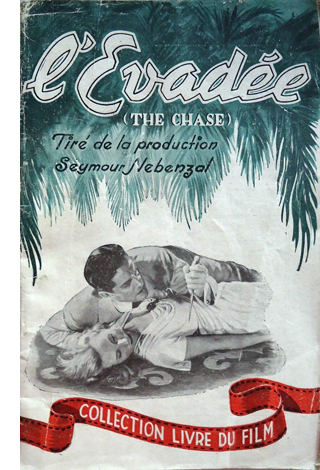 These and other anomalies in the film, along with a 1946 remark by Nebenzal about eliminating the screenplay’s “flashback,” led me to look into the production. Crucial as well were Cornell Woolrich’s original novel, The Black Path of Fear, and an anonymous novelization of the film published in Movie Mystery Magazine (December—January 1946). Since novelizations were often written on the basis of scripts, I inferred that aspects of the screenplay might have been preserved in that publication.
These and other anomalies in the film, along with a 1946 remark by Nebenzal about eliminating the screenplay’s “flashback,” led me to look into the production. Crucial as well were Cornell Woolrich’s original novel, The Black Path of Fear, and an anonymous novelization of the film published in Movie Mystery Magazine (December—January 1946). Since novelizations were often written on the basis of scripts, I inferred that aspects of the screenplay might have been preserved in that publication.
The original novel begins in Havana, where Lorna dies in the nightclub. Fleeing the police, Chuck tells Midnight, a woman who hides him, of how he met Lorna and Eddie Roman in Miami. At the end of this flashback, he sets out across Havana to find Lorna’s killer.
The central production decision, evidently taken by Nebenzal early on, was that in the film Lorna was to live and unite romantically with Chuck. How to keep Lorna alive and yet retain the dramatic murder and Chuck’s flight from the law?
Yordan’s screenplay, fairly closely followed by the novelization, adhered to Woolrich’s opening by starting with the Havana murder and letting Chuck recount the Miami backstory to Midnight. But then, on the trail of Lorna’s killer, the screenplay has Chuck killed by Gino. Then Chuck wakes up. We realize that the entire first part of the film—running an hour or so—has been his dream. So Lorna is kept alive for a genuine partnering and flight with Chuck.
The screenplay’s problem is that Chuck has dreamed not only the imaginary murder but everything leading up to it. What he tells Midnight in his dream includes all the veridical backstory of his becoming Roman’s chauffeur, learning of Lorna’s desire to escape, and fleeing with her. The dream, false in its Cuban sections, is faithful to actuality in most of its Miami stretch—the flashback that novel included and that Yordan retained.
That Miami backstory was the flashback that Nebenzal eliminated late in production, claiming that he felt there were too many flashback movies in release. He shifted the Miami scenes to the front of the movie, where they serve as conventional chronological action, and made the Midnight encounter in Chuck’s dream a straightforward scene in which she helps him evade the police.
Not quite rounded with a sleep
The screenplay and the novelization fool us by eliminating the dream’s “front frame.” There’s no scene showing Chuck going to sleep; we’re immediately in his imaginary Havana. By contrast, contemporaneous films using the dream device supplied at least a minimal setup. The Woman in the Window (1944), The Strange Affair of Uncle Harry (1945), and Strange Impersonation (released April 1946) each include an innocuous piece of action that, in retrospect, indicates that the protagonist has fallen asleep and dreamed what we’ve just seen. The return to those setup situations tips us off that we’ve just seen a dream.
Evidently Yordan wanted to take this trend further by lopping off the setup altogether and plunging us straight into a dreamscape for a very long stretch. By killing the protagonist, Yordan supplied a shock that, given Hollywood conventions, would have to be recouped somehow. The dream device does that, bringing both hero and heroine back to life.
Once the flashback was shifted to the front of the film, however, Nebenzal needed a more conventional front frame to bracket off the dreamed escape to Cuba. Therefore he supplied a scene showing Chuck lying down just before he and Lorna are to flee. This scene is not in the screenplay or the novelization.
As in other films of the time, the setup is equivocal. Chuck lies down and reads a newspaper and just barely starts to yawn as the film fades out. Cunningly, as I pointed out in the earlier entry, there’s a bridge of diegetic music—the piano concerto that Roman is listening to on the phonograph—and we then see Roman and Gino in the living room. A more typical dream film would remain attached to the dreamer; we might see Chuck get up from the bed, close his suitcase, and sneak out with Lorna. Instead, we’re with Gino when he goes to Chuck’s room, finds him gone, and reports his departure to a curiously listless Roman. So Chuck dreams Gino’s discovery of his departure. The shift to Roman and Gino seems to corroborate the objectivity of what’s happening, especially because the film’s non-dream stretches have freely intercut Chuck’s actions with those of his boss.
In the earlier entry I pointed out some visual anomalies among the framing scene, the scene of Gino visiting Chuck’s room, and the waking-up scene. Changes in props suggest that the retakes to which Nebenzal alluded in a memo in August may have included shooting the setup frame. By mid-September he was announcing that he had abandoned the flashback, and the film was completed by 7 October.
For those of a fussbudget inclination, like me, you can find hints that the original waking-up scene was modified to fit the front frame that was added later. Here’s the waking-up framing shot, which tracks back from the ringing telephone.
The lighting, setting, and camera angle closely match what we realize in retrospect was the setup of Chuck falling asleep.
But the closer views of Chuck woozily coming out of his dream vary from neighboring shots in tonality and in the position of the chair behind him. (In the master shot it’s angled to our right, but in this and other shots it’s angled to the left.)
Later shots in the waking-up scene show different positions of other props. While the chair remains angled to the left, the lampshade (tipped in the earlier establishing shots) is upright now; there’s no longer a magazine behind the lamp; and the water carafe and pills on the desk are in a slightly different array.
In addition, the lighting scheme is somewhat different; the interior of Chuck’s suitcase is blown to pale gray in the framing shots but in the ones above it’s far darker. And the coat and coatrack visible on frame left of the dream frame aren’t visible in the widest shot we get later in the scene, the second one above.
I know: Picky, picky. We could put these disparities down to routine continuity errors. But their patterned differences are consistent with their being part of a patchwork. It seems plausible that most of the waking-up scene was shot during principal photography, but the opening shot of that scene, along with the falling-asleep frame that was added, was filmed during the retakes that Nebenzal oversaw in August and September.
Cabin fever
One of the weirdest aspects of the film we have is the ending. Eddie Roman and Gino, racing to stop Chuck and Lorna from escaping, smash into a locomotive. This chase is intercut with Chuck and Lorna in a ship’s cabin waiting to sail off. The problem is that, for censorship reasons, this unmarried couple can’t easily be shown running off together, and sharing the same quarters at that.
Several commentators have noted that the set recalls the one that Chuck dreams (below, left).
The cabins aren’t all that much alike, though the clock on the back wall probably pops out as a reminder. Yordan’s script asks that the second cabin suggest the first one.
This set should be basically the same as the set used before yet there must be distinct differences.
It seems that Yordan wanted to hint that Chuck’s dream was a sort of premonition of the trip they’d wind up taking. The dialogue flirts with the possibility. As Lorna says, “For once in my life I wish I could want something that was good for me,” the screenplay goes on:
At this point, something happens to Chuck. He becomes aware that he has heard this line before. Suddenly he knows everything that she is going to say, everything that’s in her heart.
When he suggests she tries to recover her lost innocence, she asks: “You haven’t been drinking, have you?” he replies: “No–just dreaming.”
He adds that he’s dreaming “what a chauffeur’s not supposed to dream about.” Wanting to give her freedom, he decides not to go to Cuba with her and vows to reenlist in the service. They don’t embrace. Quick dissolve to Chuck marching in a military parade down Fifth Avenue. His decision not to have a runaway romance is rewarded by the sight of Lorna, now his wife, cheering him from the sidewalk. It’s on this burst of patriotism that the screenplay ends.
Was this preposterous epilogue ever shot? Had it been jettisoned by the start of production on 16 May, presumably the 14 April script wouldn’t have included it (since it includes some revisions dated 16 May). But the parade isn’t in the novelization, which is otherwise very faithful to the April script. The novelization was based on a script sent to the magazine in late June or early July, so perhaps the parade was dropped after principal photography began. We do know that in September Nebenzal was shooting alternative endings.
The novelization’s cabin scene follows the screenplay’s tack, indicating that Chuck’s “dream” of union with Lorna should end with the couple splitting up. But she resists his suggestion, and things take a familiar turn.
And in the next instant, Chuck’s mouth found her warm lips, shutting off her words, his arms pressing her to him crushingly.
This burst of passion is interrupted by a telegram from Dr. Davidson telling Chuck of Eddie’s death. The message asks the couple to return, in a wry phrasing: “Before you get into any real trouble in Havana.” This version concludes with them agreeing to get off the ship and get married, so they never sail for Havana. No parade finale here.
The film’s last moments, as any aficionado knows, are something else again. The scene in the cabin is played eerily, with Chuck striding in and glancing at a newspaper he’s carrying. When she asks when the boat will get started, he says, “It doesn’t matter now.” Did the newspaper carry news of Roman’s crash? (Unlikely, so soon.) And why doesn’t he take Lorna in his arms, for the clinch and fade-out? Did the production team not have the footage, after shooting the lead-in to the parade?
The film’s epilogue, absent from both the script and the novelization, casts aside any concern about whether this furtive couple has married or not. We’re back in front of the La Habana club, with Chuck and Lorna in the carriage declaring their love for one another.
This scene (below left), as I suggested in the August entry, is quarried out of footage shot for Chuck’s dream (below right), right down to the grumpy driver.
The result is pretty Buñuelian. You can call it a reenactment of the dream in real life. Or you can say that it plunges us back into Chuck’s dream–leaving the shipboard resolution suspended. In their haste to wrap things up, Nebenzal and his director Arthur Ripley give us the conventional clinch, all right, but with a screwball spin.
So my conjecture about the original ordering of the film’s plot is borne out by the discovery of the screenplay. But we still don’t know why the film, once the parade epilogue was jettisoned, doesn’t include the clinch in the cabin and the resolution to marry. Both were in the novelization. Why go back to the Habana club and the recycled footage? Only further research into other production documents can tell us for sure. In the meantime, we’re left with another Forties film that flaunts the unexpected virtues of accidental innovation.
The Chase was restored by UCLA and is available on a handsome Blu-ray edition from Kino Lorber. My references to production materials and press releases for the film come from the sources listed in the earlier entry. One of my illustrations above comes from a French novelization that I haven’t yet found; I assume that it’s a translation of the English one, but maybe not.
This isn’t the first time I’ve returned to fuss over an earlier entry. I did it with The Ambersons Poster Mystery (here and here and here and here) and twice with Hitchcock’s ideas of suspense (here and here). If I keep trying, maybe I’ll get it right.
Surprisingly, the dream device was built into the studio’s publicity to a small extent. (See images below.)
P.S. 2 November 2016: David Koepp, film noir aficionado, adroit screenwriter and director, and one of the People We Like, writes:
I love your blog post on The Chase. Just read it, and, coincidentally, I just watched The Chase yesterday and had been meaning to e-mail you about it. You’ve said pretty much all there is to say about that movie already (and with your customary thoughtfulness), but just two things I wanted to add.
First, this film stretches the kind phrase “bold use of coincidence” to new extremes. There is seemingly NO situation that they weren’t comfortable having resolved, furthered, or complicated by coincidence, and in a strange way I kind of came to appreciate that. I mean, it’s economical, if nothing else.
But my second thing is more interesting. It’s funny that you focus today on the falling-asleep framing device for the dream sequence, because I had an observation in that very spot, a curious bit of staging which I didn’t fully understand, but now I think I do thanks to your post. After the master shot pulls back from the phone, Robert Cummings goes to the bed and does the strangest thing. He picks up the pillow, tosses it to the foot of the bed, and lays down on the bed for his fateful nap, WITH HIS SHOES ON. Think about that — he picks up the pillow from the socially agreed-upon head of the bed, tosses it to the foot of the bed, and then lies down with his dirty shoes on the now-unprotected sheet at the head of the bed. Who in God’s name would do that?
Only one person I can think of — an actor who’s been asked by the director to do it to protect the composition. In its widest position, the lamp in the right foreground blocks the head of the bed and the remainder of the set to the right, and the master shot plays beautifully as one long pullback. So, at first I figured the director just liked his master and asked the actor to toss the pillow to the foot of the bed, i.e., “I know it’s weird, Bob, but would you mind?, it’s a lovely shot and I don’t want to have to break it up and turn around to shoot you at the head of the bed.”
But there’s another possible reason, if your reshoot theory is correct. Which is that they were rushing to squeeze in a clarifying reshoot, struggling to recreate the set and props as they were in the original footage, and they didn’t want/didn’t have time to/couldn’t afford to rebuild the other walls of the set to accommodate. Plus there’s a door in the wall to camera right, and a hallway outside it with a return. More stuff to build–way too expensive and time-consuming for the hurry-up-and-grab-this approach they’d need for a reshoot with the studio and the release date breathing down their necks.
Maybe? Who knows! But it’s fun to speculate.
It’s interesting that in the April screenplay, Yordan doesn’t specify that Chuck is sleeping at the foot of his bed. We simply have: “Chuck lying on his cot, fully dressed in his chauffeur’s uniform.” David’s point is persuasive to me. It would be harder to compose a pull-back from the phone (a gradual revelation that Yordan’s screenplay insists on) if Chuck were lying at the head of the bed. The awakened shots not made during the reshoots also have Chuck sleeping at the foot of the bed, but David’s point about the composition makes sense for those too.
David’s mention of Chuck’s position makes me think about something else. Lying at the foot of the bed also suggests, to me at least, an intention of not going to sleep but rather just relaxing. Had Chuck stretched out on the bed normally, might we be more inclined to suspect a dream was coming on?
Thanks to David for sharing the practical filmmaker’s perspective! Now more than ever I’d like to see the daily set reports for this movie.
P.P.P. 13 November 2016: For hardcore fans only: At the suggestion of Soren Schoff, a local friend, I obtained a copy of the UK novelization of The Chase, published by Hollywood Publications of London in 1947. It’s signed by Kit Porlock, a name one sees on many novelizations published in London in the Forties. This text is quite different from the Movie Mystery Magazine edition, and it adheres closely to the finished film. But there are interesting aspects to it.
 Like the movie, it starts with Chuck in Miami and follows him through the romance with Lorna. The front end of the dream frame, just before he’s about to run off with Lorna, is given more explicitly than in the film:
Like the movie, it starts with Chuck in Miami and follows him through the romance with Lorna. The front end of the dream frame, just before he’s about to run off with Lorna, is given more explicitly than in the film:
He stretched out on the divan for a while. He had nothing to do for the next four or five hours. A nap would be sensible if only he could get to sleep.
He took a couple of his pills and tried to relax. It was no good. Too many images and fancies revolved in his brain. He readjusted the pillow under his head and sprawled out luxuriously Just to have an hour or so would do him the world of good. . . . .
This ends a chapter. The next chapter begins with Gino entering and finding Chuck gone, more or less as in the film.
When Chuck comes out of the Havana dream, the novelization likewise makes sure we know it wasn’t real (“All that was so vivid to him had only been a dream!”). But the amnesia has kicked in and so Chuck has to seek help from Dr. Davidson, as in the film.
There are two only other major differences from the finished film. For one thing, like the US adaptation, the UK one ends with Lorna and Chuck in the ship’s cabin. Here it’s clear that the ship has delayed departure long enough for a newspaper edition to arrive and announce the deaths of Roman and Gino in the car crash. In the film, Chuck simply comes in with a folded newspaper, and we aren’t explicitly told why he now thinks the two of them are safe. Maybe the final release just dropped his act of showing her the news item.
The second difference from the film is that, like the MMM version, the story ends in the cabin with the couple united in love. There’s no epilogue in the carriage outside the La Habana club. This novelization, said to be “from the original film script,” isn’t, but perhaps it’s based on a rewrite that was closer to the final release–that is, after Nebenzal had shifted the flashback to the front of the plot and had jettisoned the military-parade finale. But we still have to wonder why the final cabin clinch in both novelizations isn’t there in the film, and why the carriage scene isn’t in either novelization. The Chase remains elusive.
The Chase (1946) United Artists pressbook.












